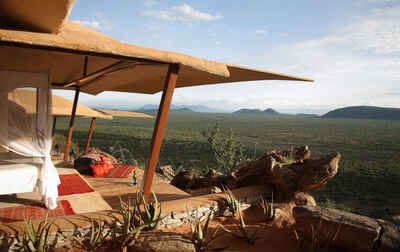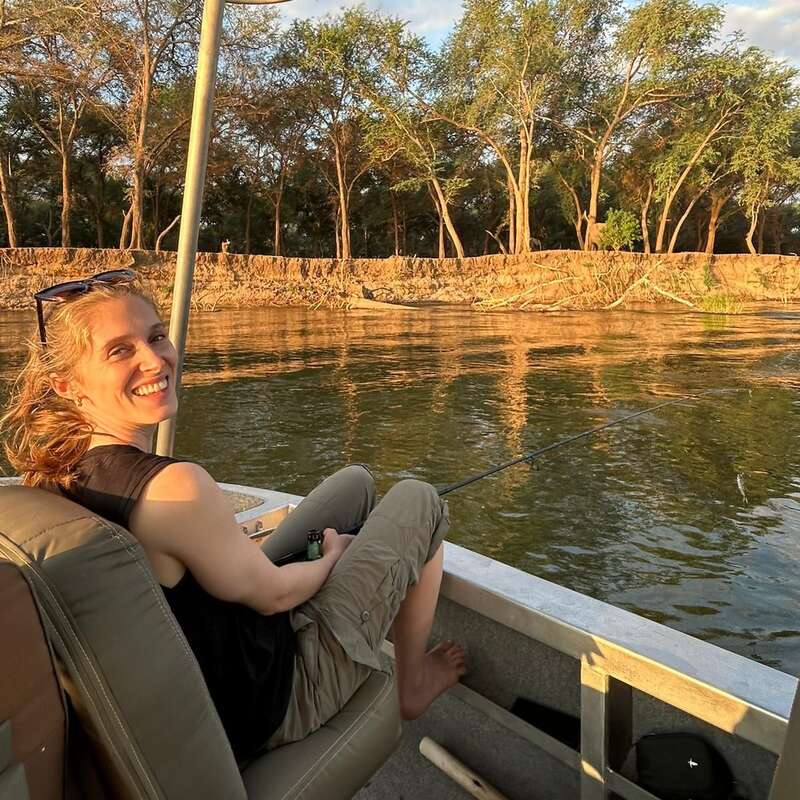About Saruni Samburu
Saruni Samburu is a luxury lodge perched atop a rocky inselberg in the exclusive, remote, Kalama Conservancy, ...
... north of the Samburu National Reserve. The lodge is in reach of the national reserve for game drives and has spectacular views overlooking this famous wildlife area and across to Mount Kenya on the southern horizon.
Saruni Samburu has one of the most awe-inspiring locations in Kenya thanks to its uninterrupted views over the conservancy. The lodge makes all it can of this, and has an openness that allows for a fantastic mix of outdoors living with a high degree of style. It's a luxurious option, but is very unpretentious and has a relaxing atmosphere. This, twinned with the exclusivity of the conservancy, makes Saruni Samburu a great choice for this area. However it's worth noting that this exclusivity also means that it is quite a long drive to the best game-viewing areas in the Samburu ecosystem.
Our view
Saruni Samburu has one of the most awe-inspiring locations in Kenya thanks to its uninterrupted views over the conservancy. The lodge makes all it can of this, and has an openness that allows for a fantastic mix of outdoors living with a high degree of style. It's a luxurious option, but is very unpretentious and has a relaxing atmosphere. This, twinned with the exclusivity of the conservancy, makes Saruni Samburu a great choice for this area. However it's worth noting that this exclusivity also means that it is quite a long drive to the best game-viewing areas in the Samburu ecosystem.
Accommodation
8 villas
Children
Best for 12+
Open
All year
Activities

4WD Safari

Birdwatching

Cultural excursion

Guided walking safari

Private activities
Traveller reviews of Saruni Samburu
29 real, un-edited reviews from Expert Africa's travellers.
Arrived 5 Oct 2024, 4 nights
"Saruni Samburu review"
Overall rating: Good
Arrived 25 Sep 2024, 3 nights
"Saruni Samburu review"
Overall rating: Good
Arrived 16 Sep 2024, 3 nights
"Saruni Samburu review"
Overall rating: Good
Arrived 16 Sep 2024, 3 nights
"Saruni Samburu review"
Overall rating: Excellent
Arrived 16 Feb 2024, 3 nights
"Saruni Samburu review"
Overall rating: Excellent
Arrived 27 Jan 2023, 2 nights
"Saruni Samburu review"
Overall rating: Excellent
Arrived 16 Jan 2023, 3 nights
"Saruni Samburu review"
Overall rating: Excellent
Arrived 26 Oct 2022, 4 nights
"Saruni Samburu review"
Overall rating: Excellent
Arrived 8 Oct 2022, 4 nights
"Saruni Samburu review"
Overall rating: Excellent
Arrived 3 Jan 2022, 3 nights
"Gorgeous location with stunning views"
Overall rating: Excellent
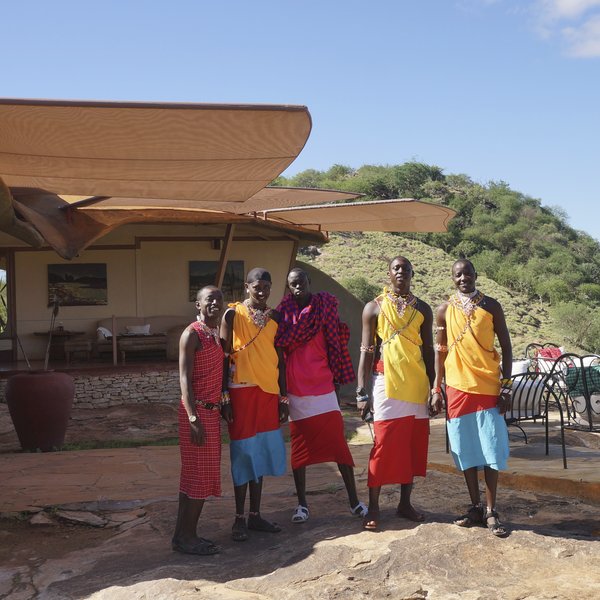
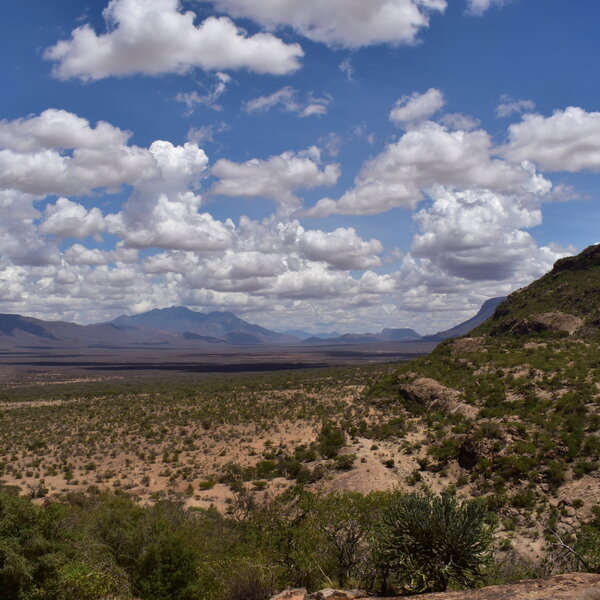
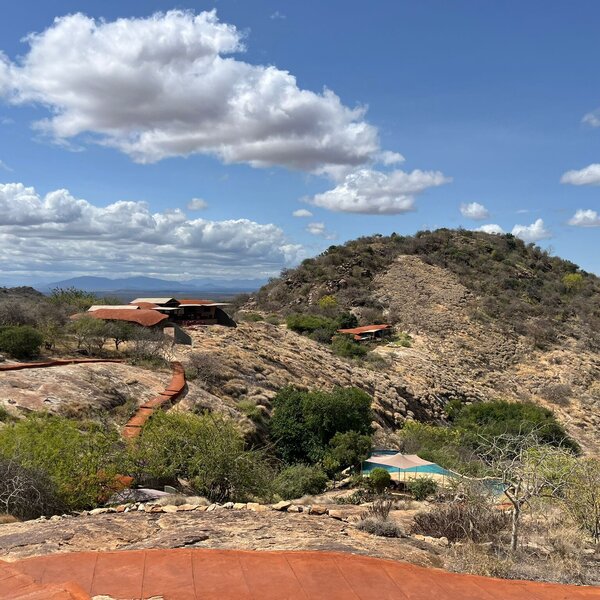
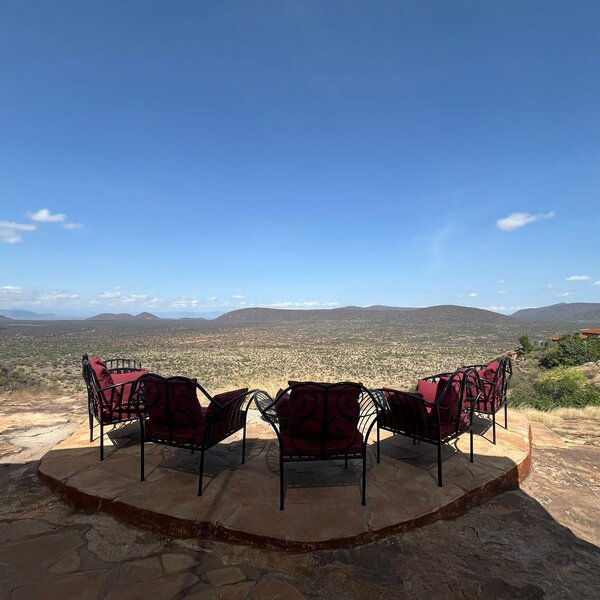
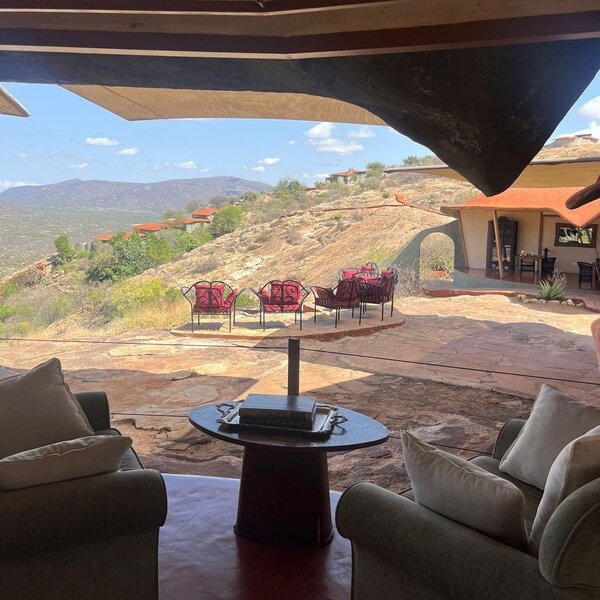
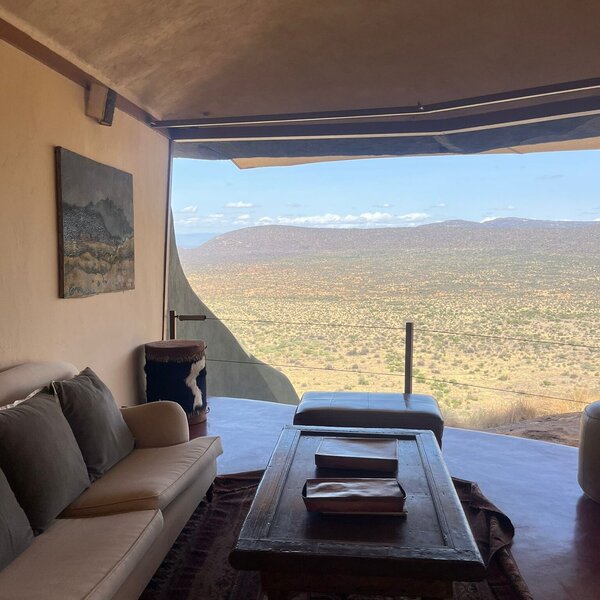
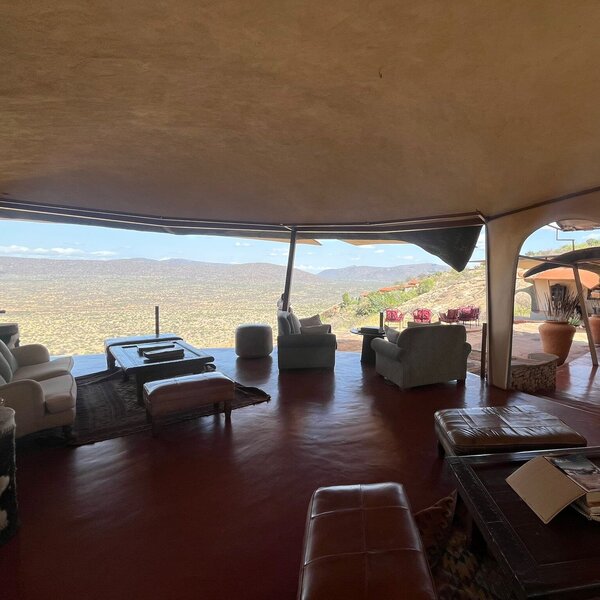
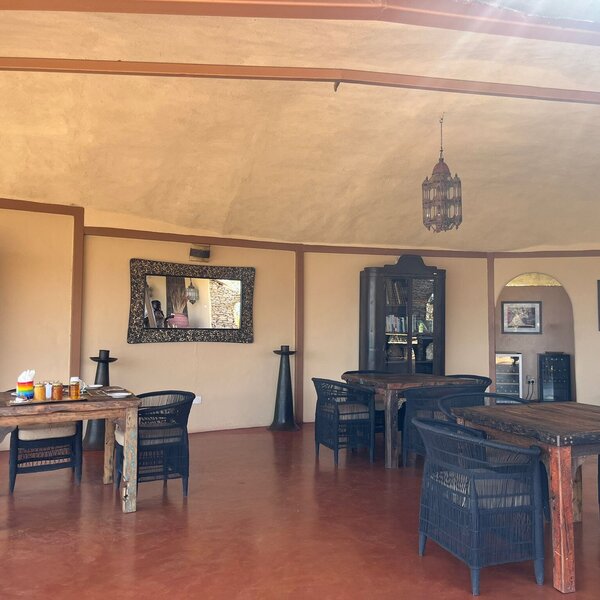
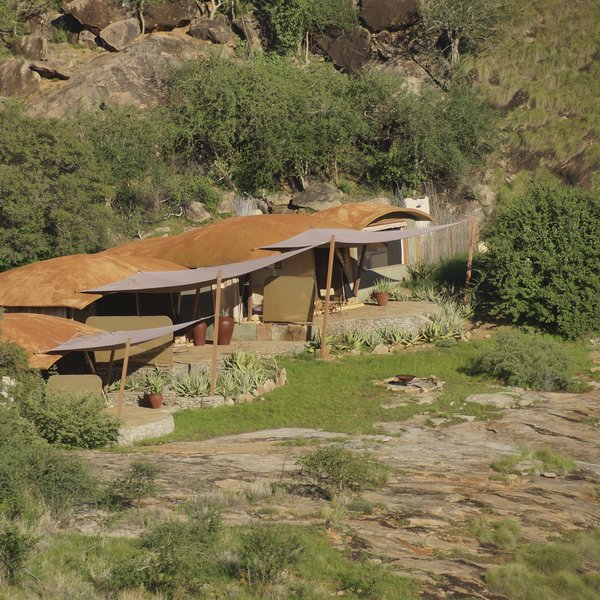
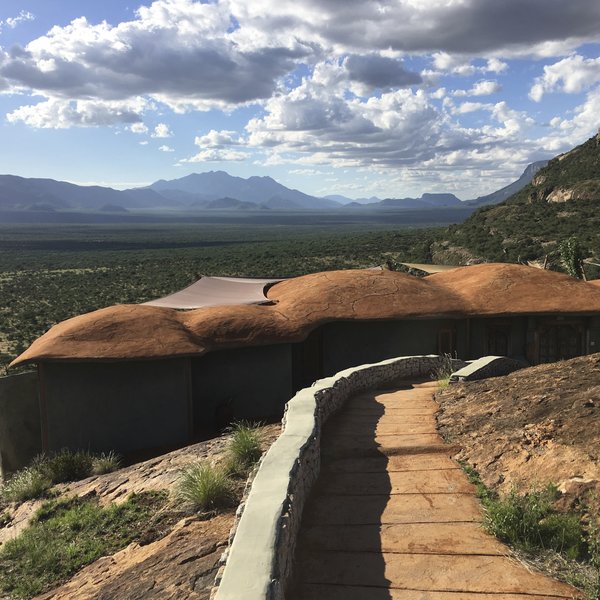
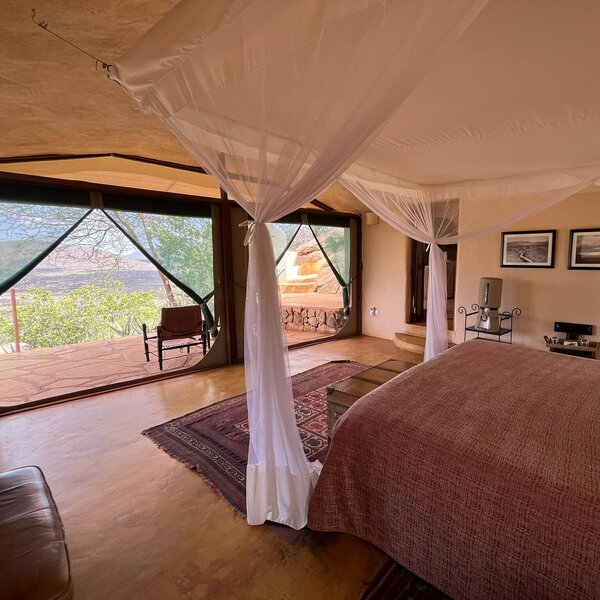
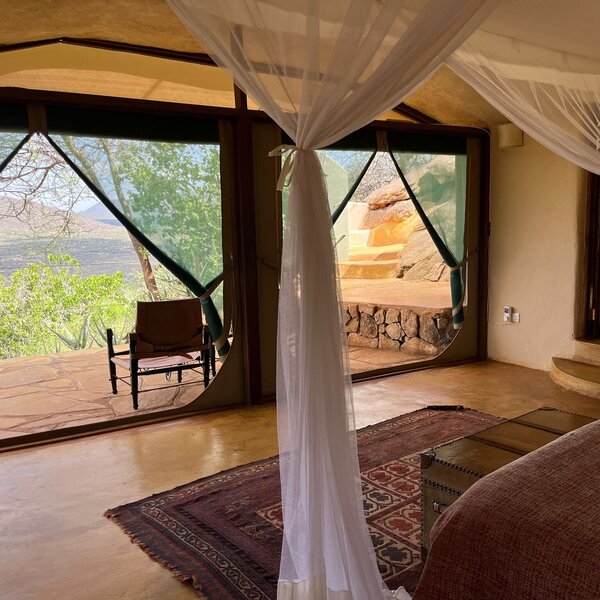
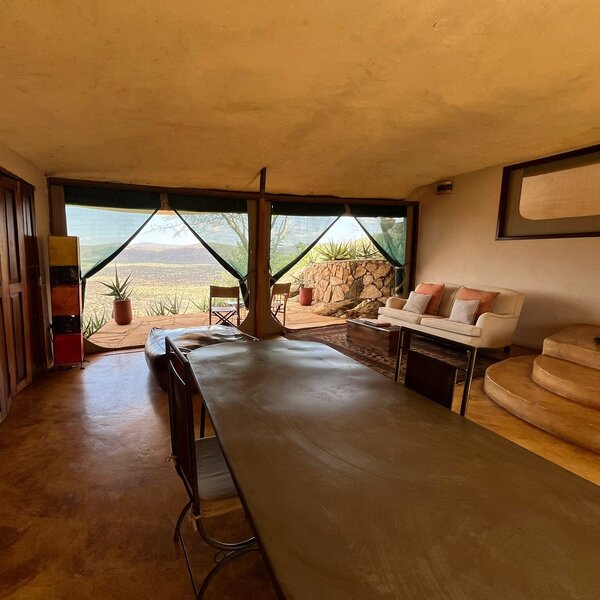
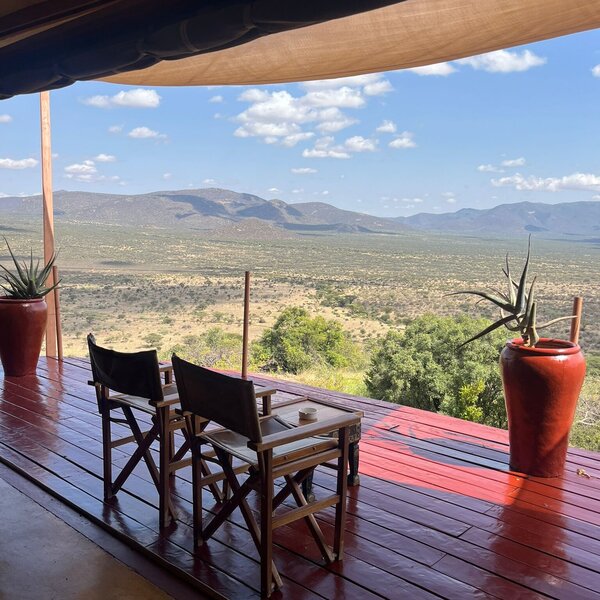
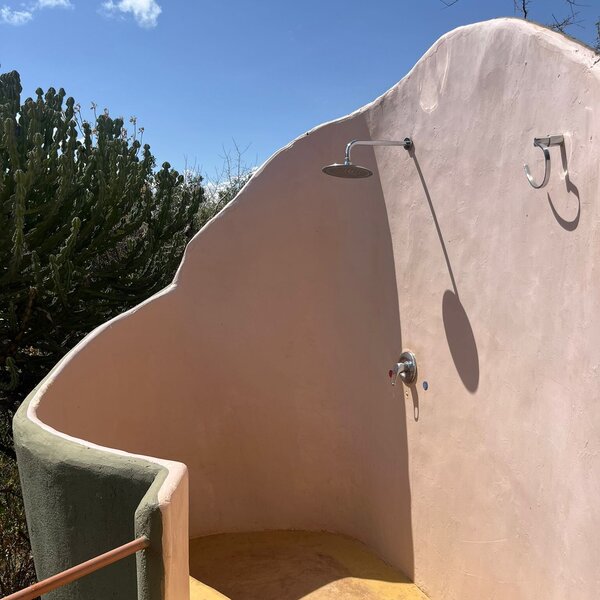
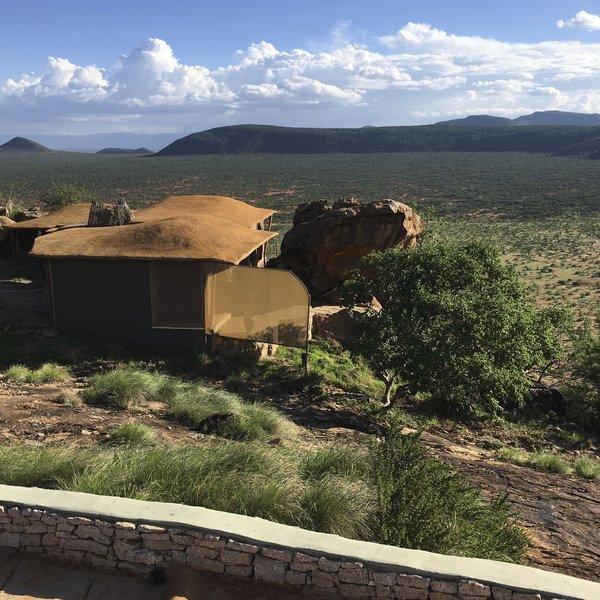
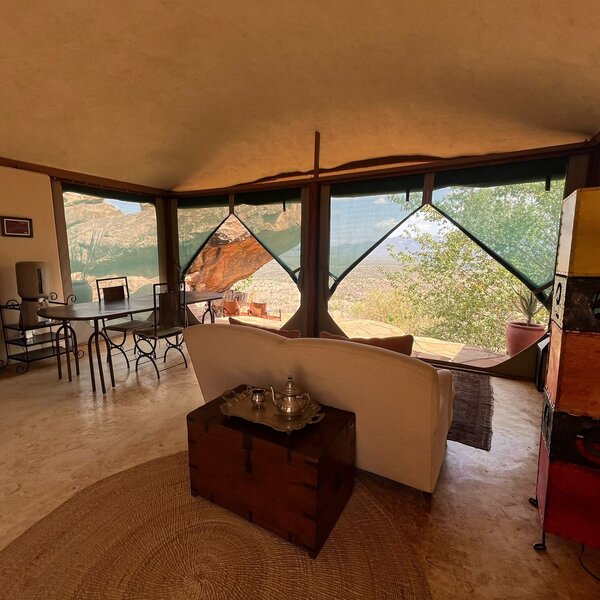
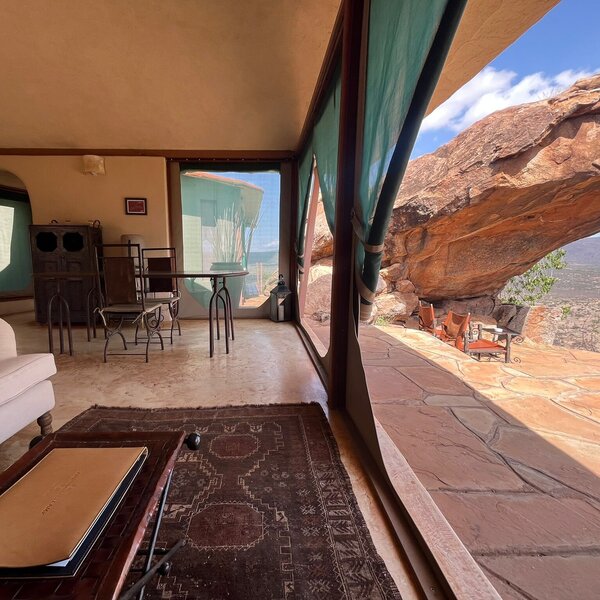
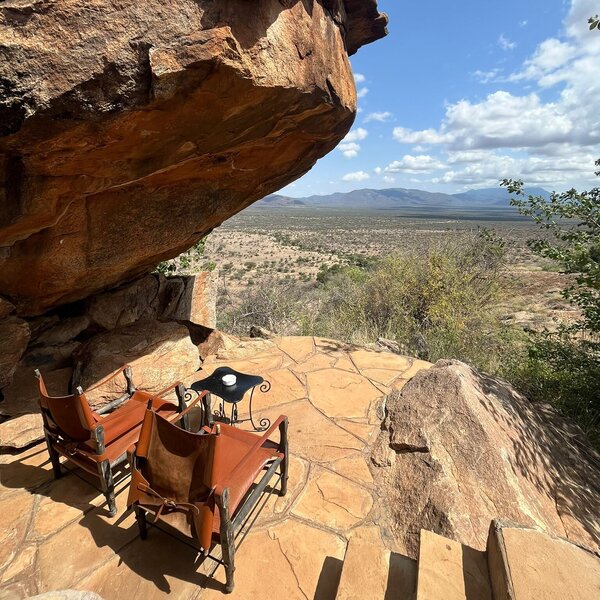
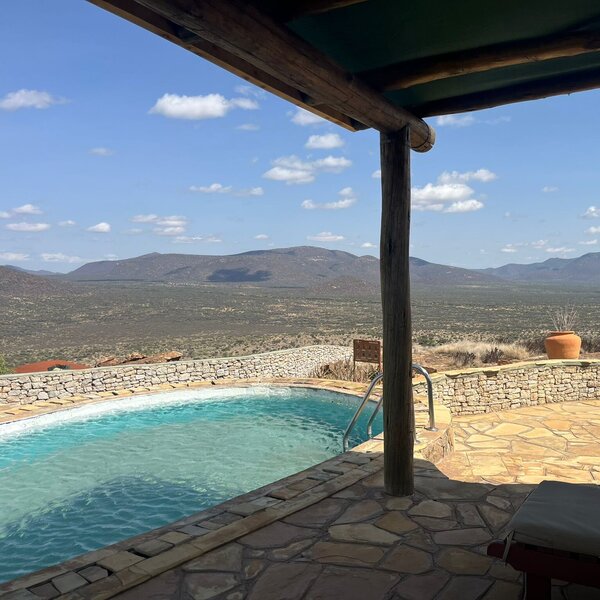
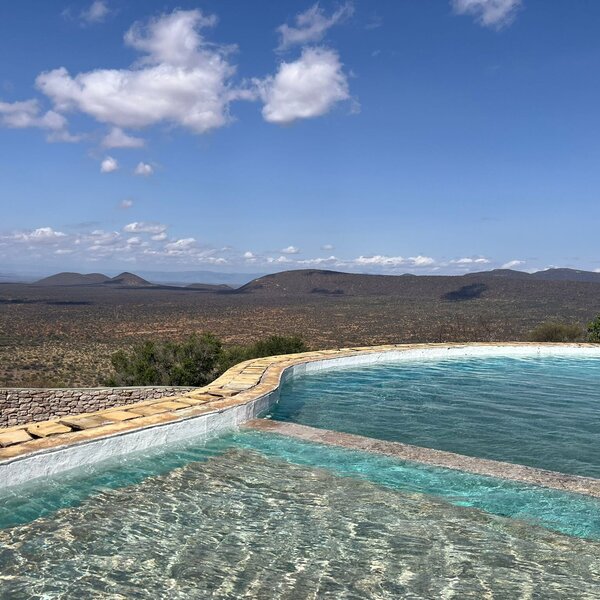
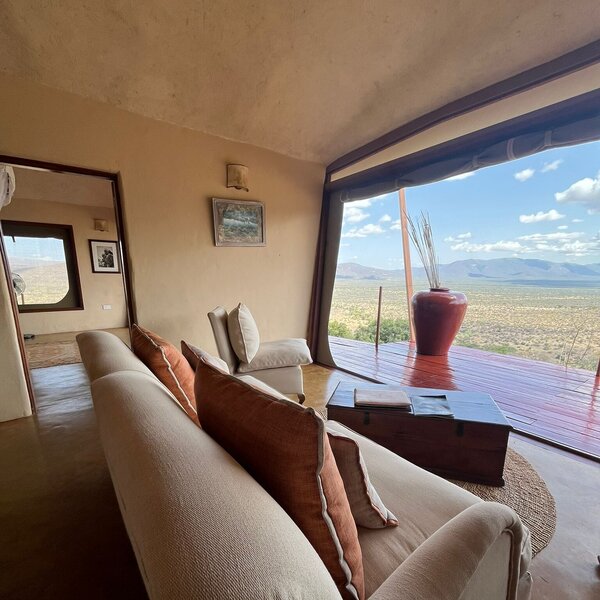
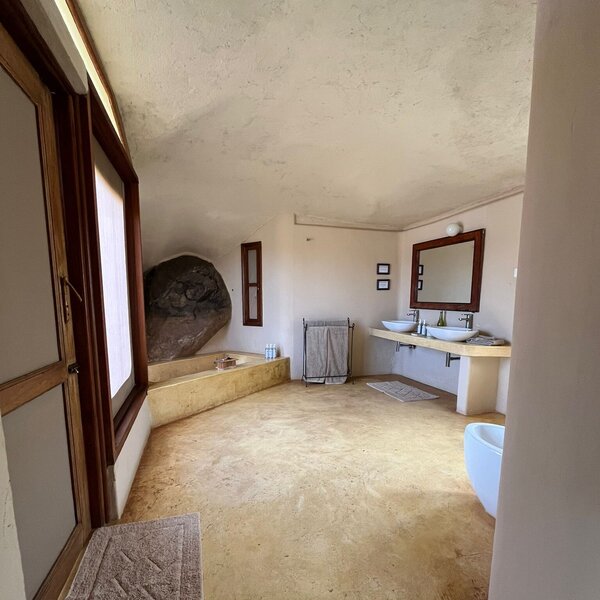
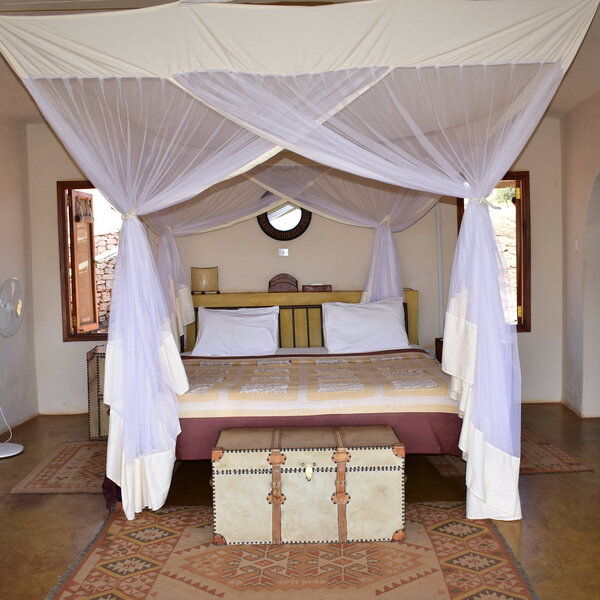
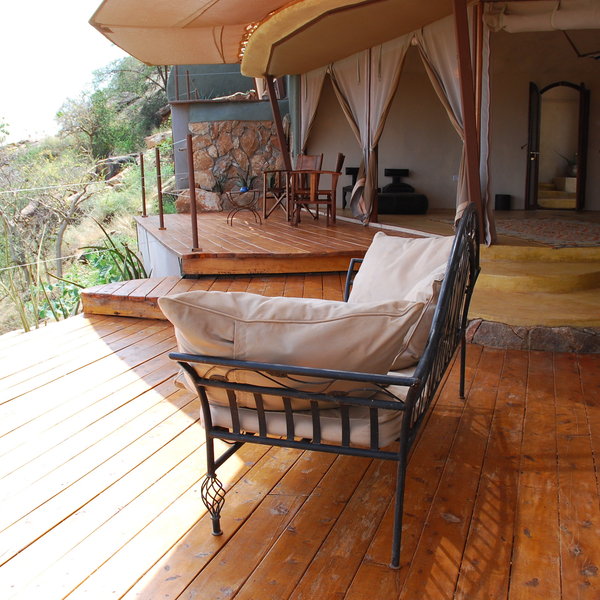
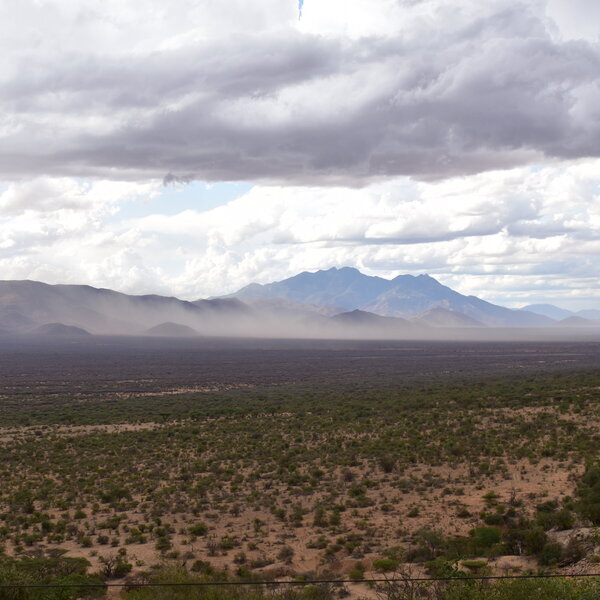
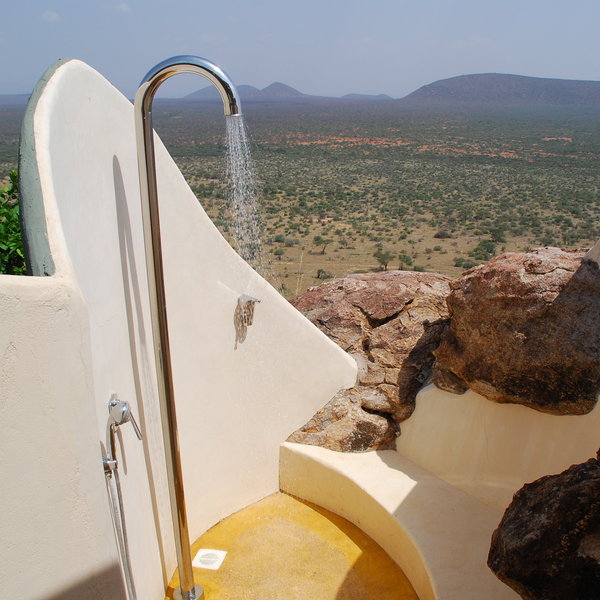
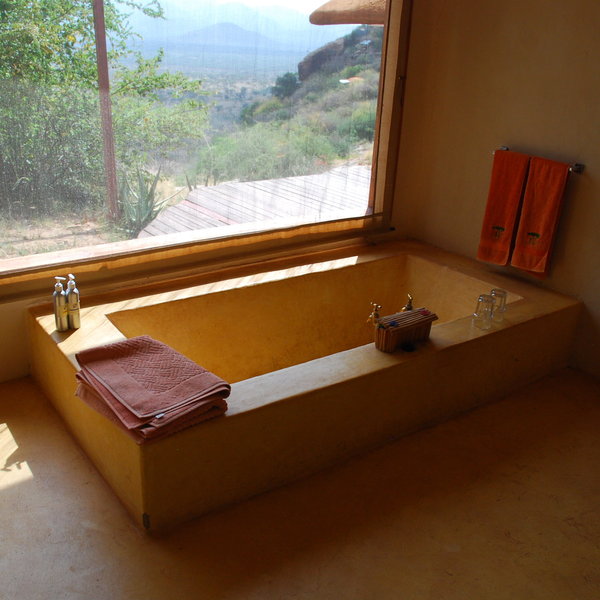
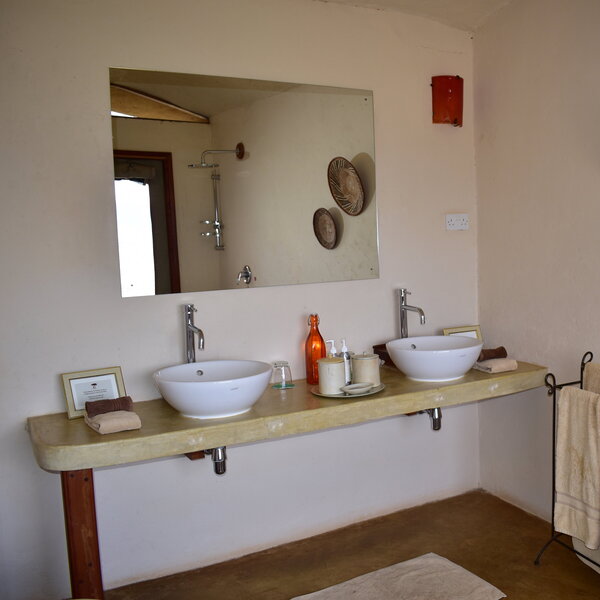
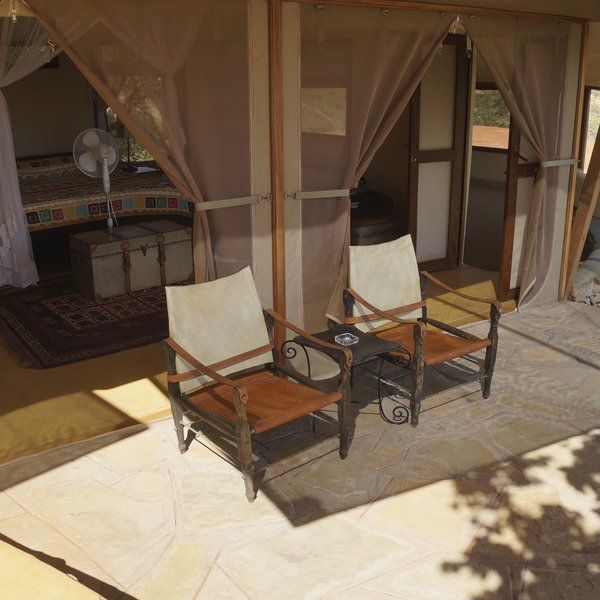
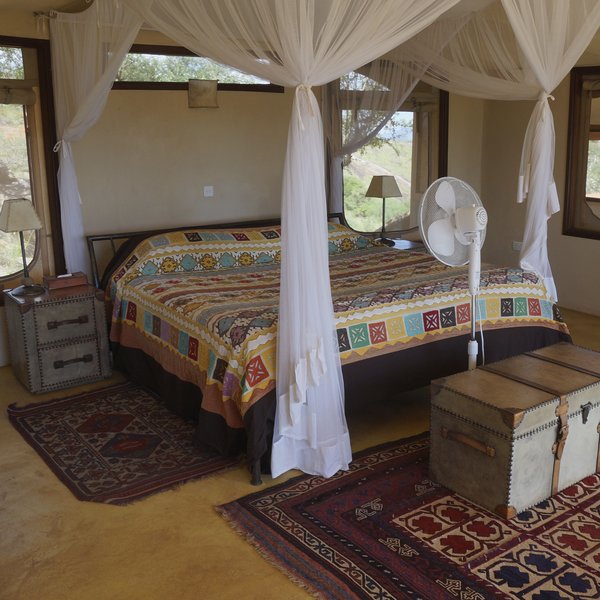
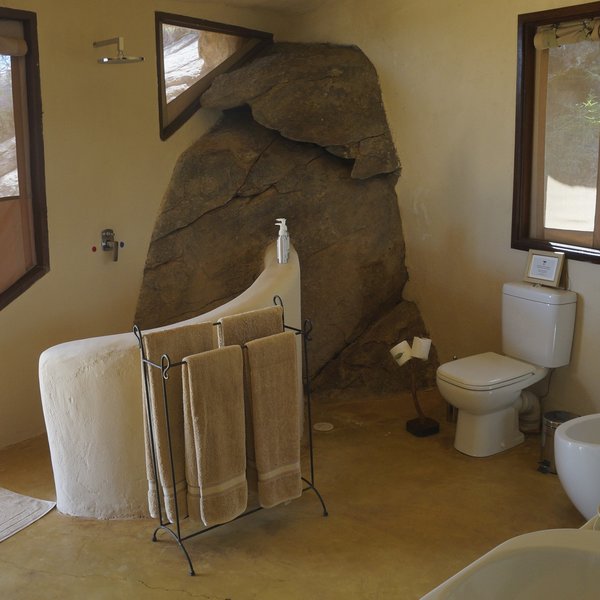
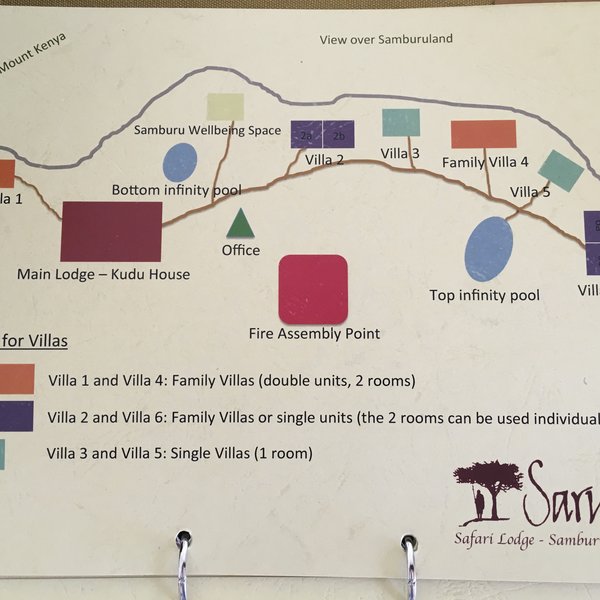
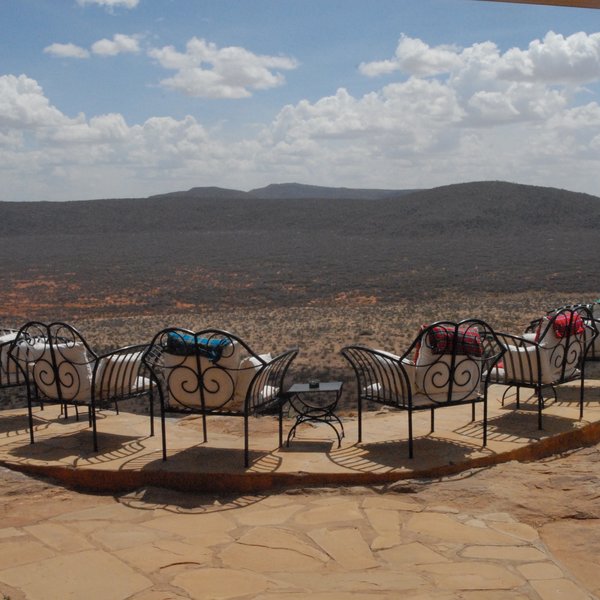
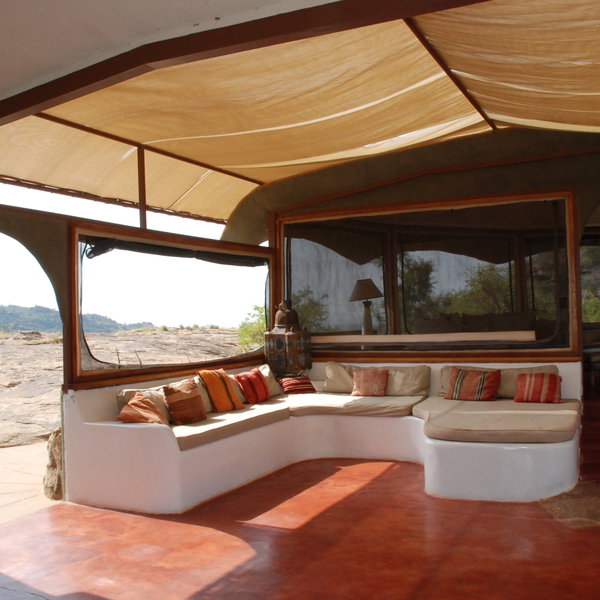
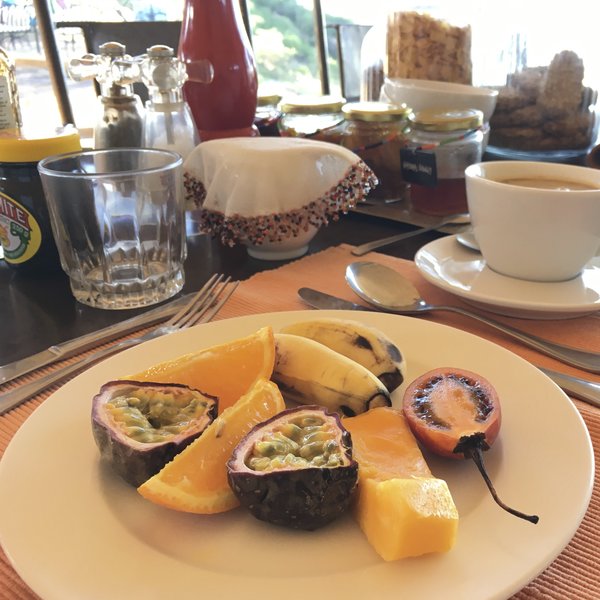
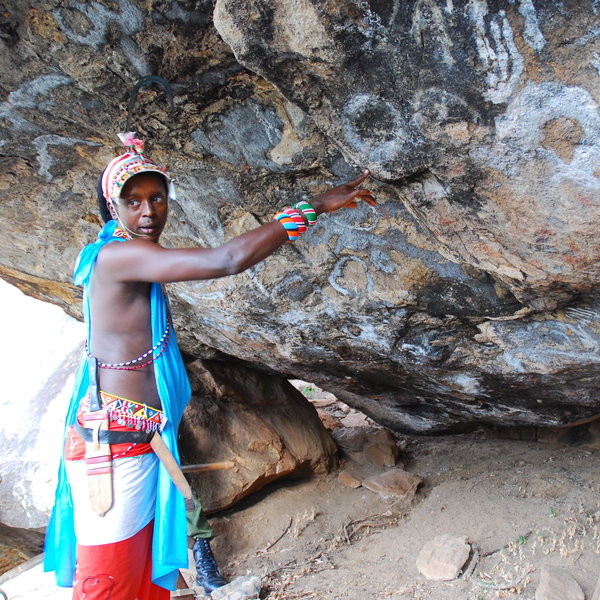
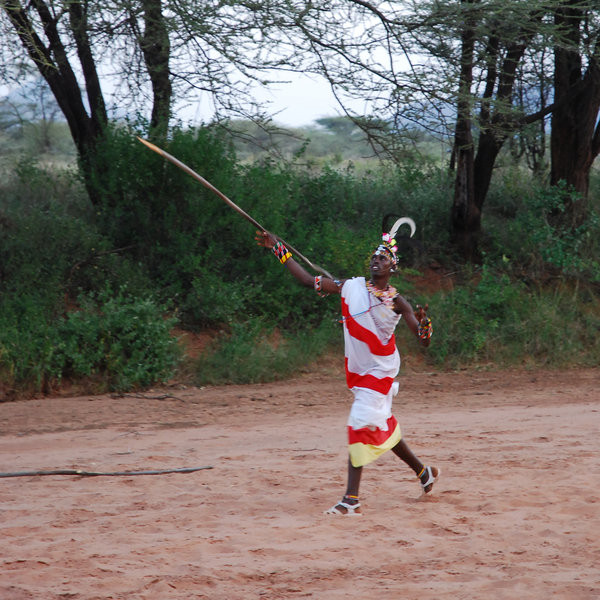
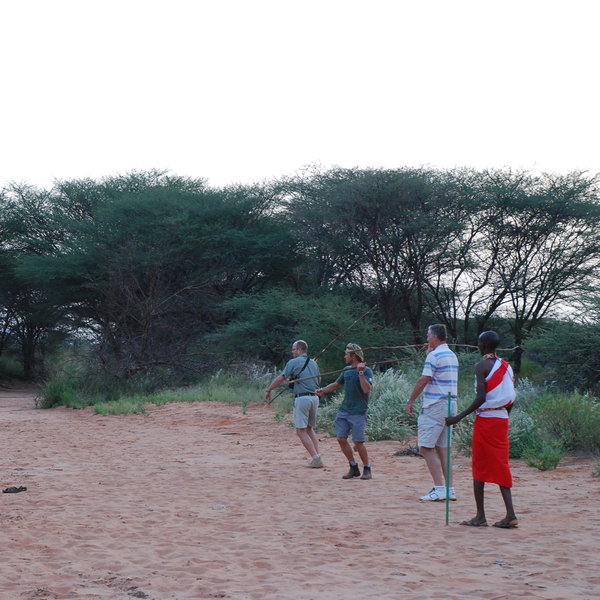
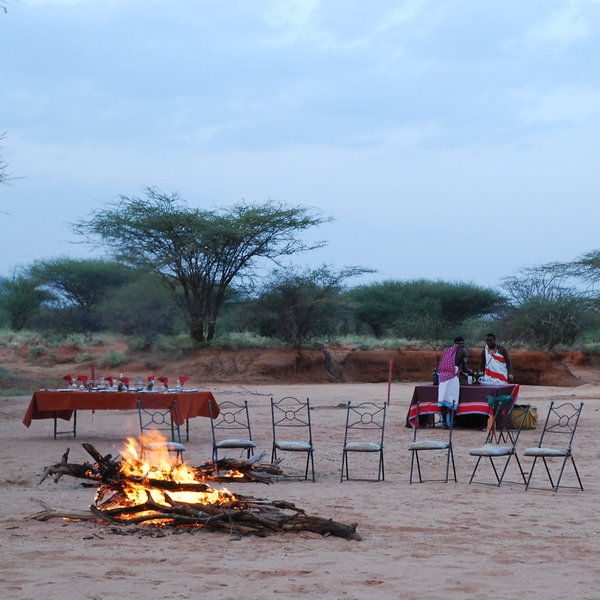
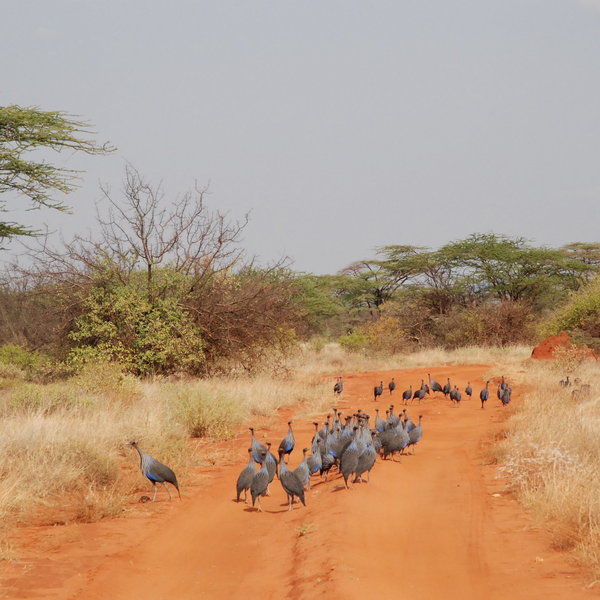
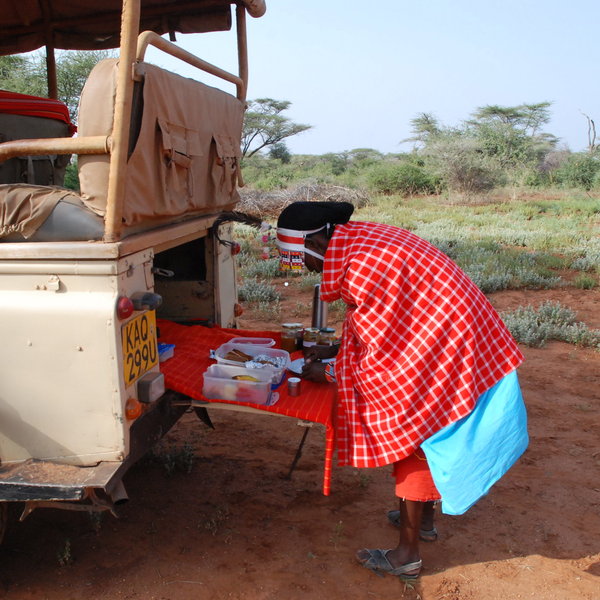
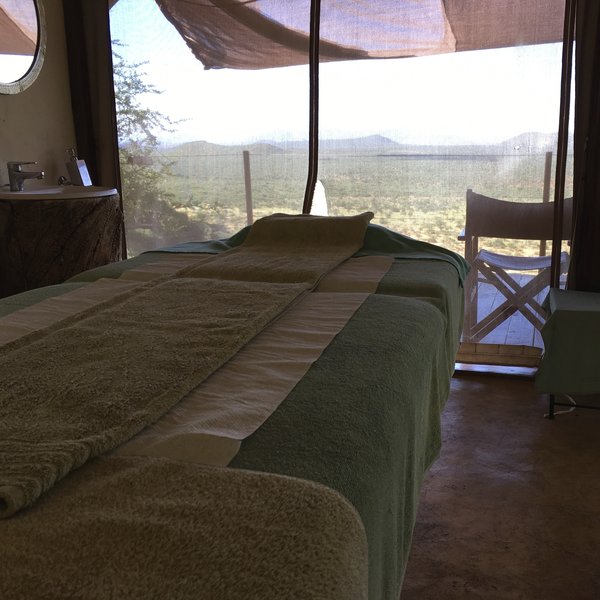
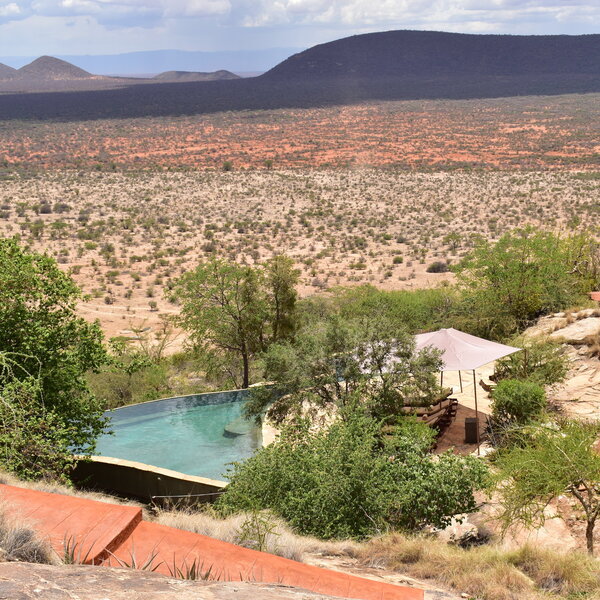
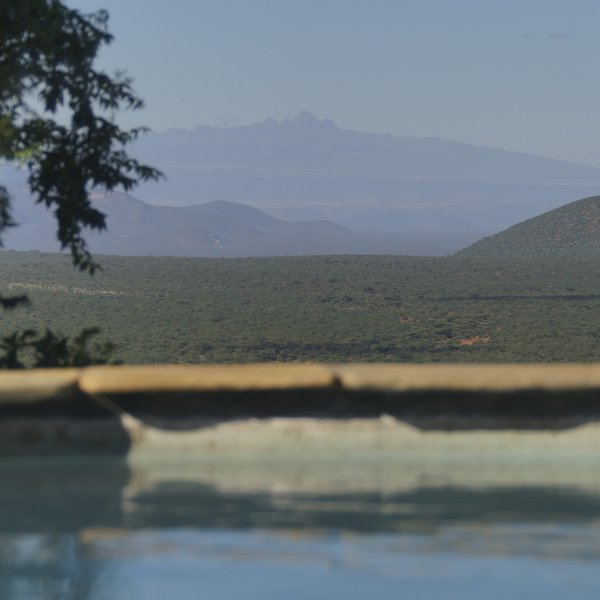
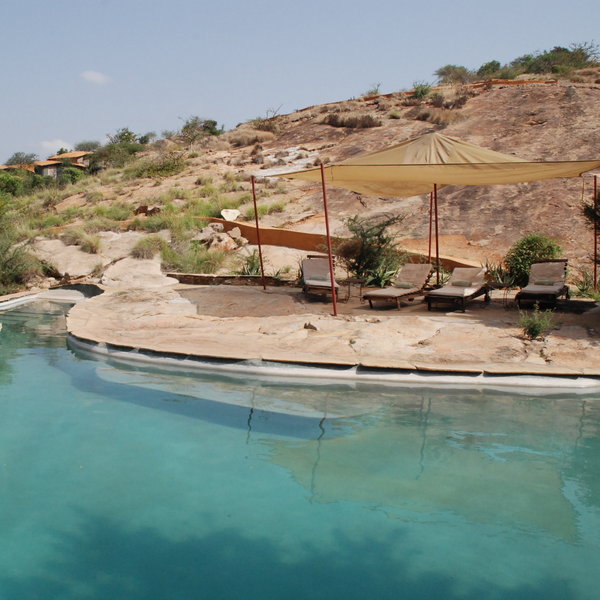
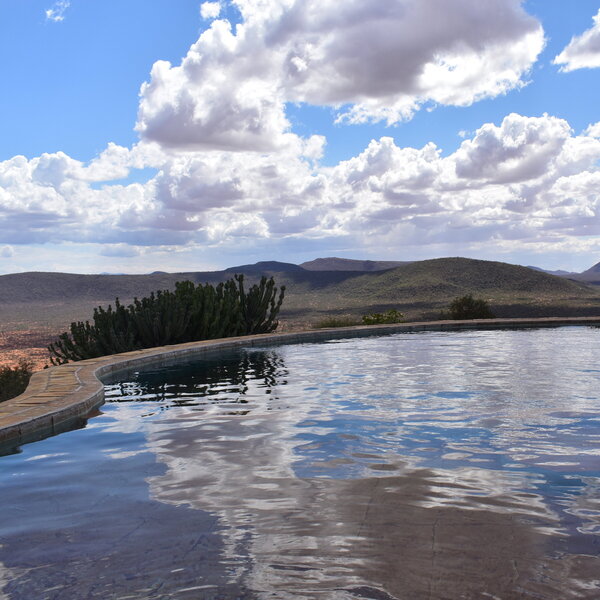
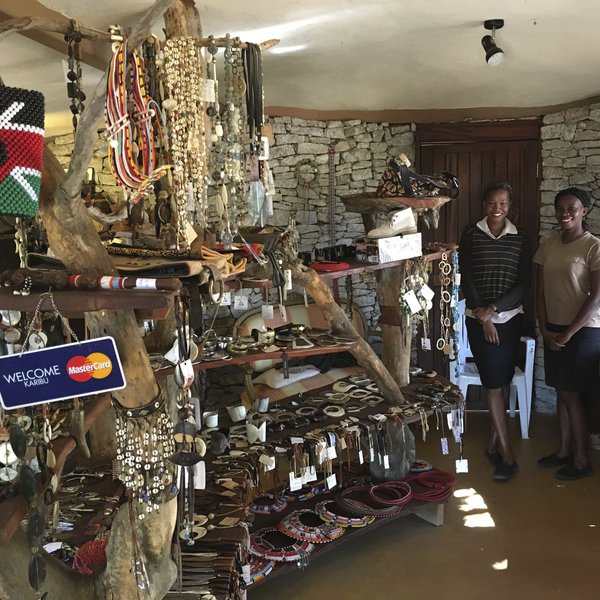
Expert Africa's gallery
When we travel we take lots of photos ourselves to give you a real and un-edited view of the safaris. See our 48 pictures and 1 videos of Saruni Samburu to get the candid view.
View gallerySafaris visiting Saruni Samburu
Just ideas, we'll always tailor-make a trip for you
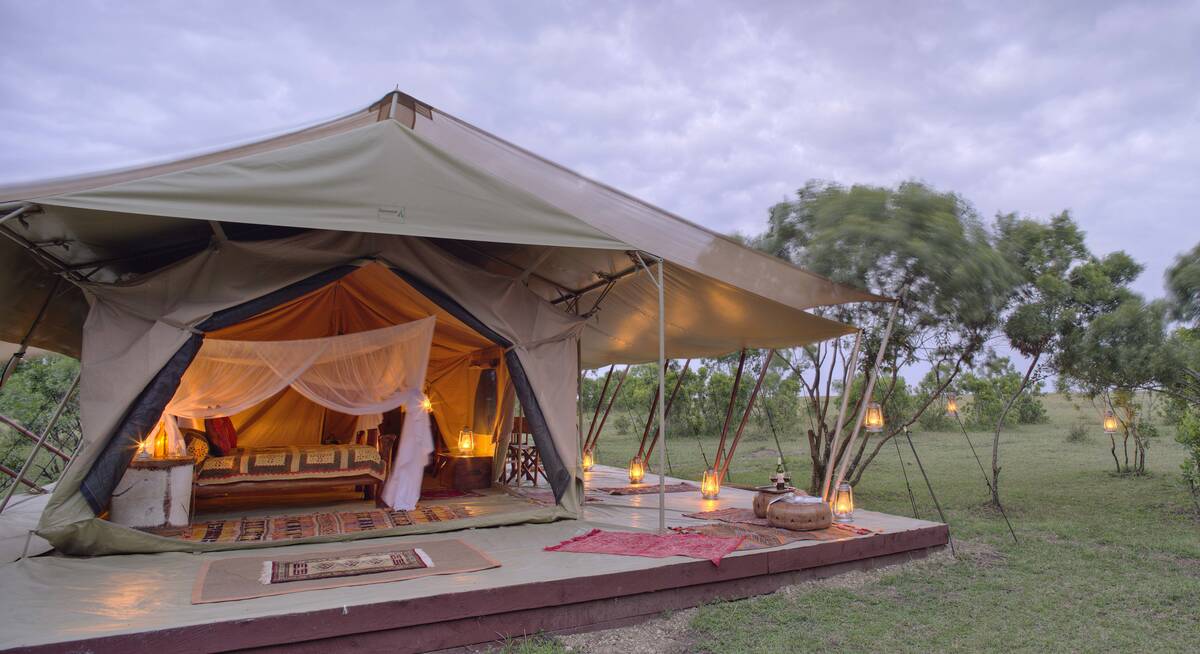
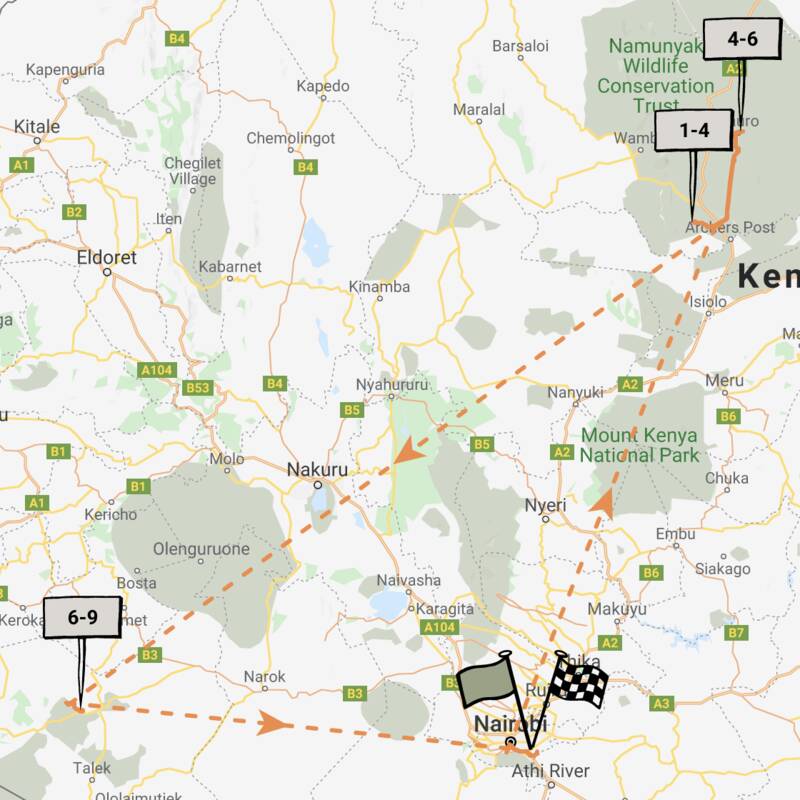
Lanner Falcon Fly-In Safari
8 days • 3 locations • 1 country
NAIROBI AIRPORT TO NAIROBI AIRPORT
Three sister camps offer access to wonderfully remote regions across northern Kenya and the Maasai Mara ecosystem. Enjoy an exclusive safari experience focused on great wildlife, superb guiding and considerable comfort, with a range of activities.
Visiting Samburu, Mara Conservancies and 1 other area
US$7,140 - US$8,400 per person
Saruni Samburu: Our full report
Saruni Samburu is a luxury lodge perched atop a rocky inselberg in the exclusive, remote, Kalama Conservancy, ...
... north of the Samburu National Reserve. The lodge is in reach of the national reserve for game drives and has spectacular views overlooking this famous wildlife area and across to Mount Kenya on the southern horizon.
Saruni Samburu opened in 2008 and has been put together with designer flair. It's the sister lodge of co-owned Basecamp Samburu, Saruni Mara and Saruni Wild in the Maasai Mara ecoystem, and Saruni Rhino in northern Kenya.
The entire property is spread across an ochre-red mountain of solid rock with every part facing out across the plains far below. The arresting view is hidden until the last minute: you arrive by vehicle, up a steep rocky track at the rear of the lodge, and only when you walk from the car into the main lounge and dining area does the full vista open up in front of you to dramatic effect. It is truly spectacular.
The open-fronted central lounge and dining area, known as Kudu House, is partially roofed and has a few shallow steps to create a subtle subdivision between the two areas. They share a similar style with clean, whitewashed walls, polished red-cement floors and north African and Arab fittings. The homely lounge is decorated with comfortable cream, pale green and beige sofas and footstools, positioned around tables strewn with coffee-table books, and the floor is studded with Persian rugs and tall terracotta pots. A further sofa and chairs are set closer to the rock edge for those who can't tear themselves away from the view.
Meals are either served at the communal dining table, or set up on individual smaller group tables and guests can choose to dine in their villas or by the pool. We enjoyed some excellent, mostly Italian-style dishes, served by the experienced and friendly staff.
Far below Saruni Samburu's main area, and accessed via a well-maintained red stone pathway, is the glistening infinity swimming pool. The unusual shape seems to mimic the curves of the surrounding rocks, while the edge gives way to a steep drop onto the plains below. Parasols cast shade over sun loungers making this an idyllic spot to while away a few hours. This is the first of two swimming pools at Saruni Samburu, the other being a five-minute walk further up the rock at the far end of the lodge, equipped with loos and a changing room. It is well worth the ascent: this second pool is located at the highest point of the property and the views over the Kalama Conservancy from here are jaw-dropping.
If you're in need of further relaxation, head to the spa, situated below the first pool – a simple room set up for massage treatments, pedicures and manicures. This was set up in collaboration with the Italian hotel, ‘Grand Hotel Des Iles Borromees’, which is known for its spa treatments, and Saruni’s therapy menu is extensive. As with the rest of the lodge, the front is open to the view.
Saruni's well-stocked shop sells locally crafted objects including colourful beadwork, jewellery, Christmas decorations and much more – the money from which is put back into the local community – alongside glamorous articles made in Nairobi.
The eight villas at Saruni Samburu all vary slightly in size and shape, and are spread along the front of the rock face. Some of them can be quite a long walk from the main area, with some inclines, and this is a significant consideration if your group includes elderly people or children. Take a look at the plan of the lodge's layout in our slideshow: Villa #1 is a minute or two's walk from Kudu House, while Villas #2–6 range west along the rock face, with Villa #6 taking around 5 minutes to walk to from Kudu House.
- Two pairs of villas (Family Villas #1a-1b, and #4a-4b) are large family villas, each with an en-suite double and twin bedroom on either side of a large central lounge area. Depending on numbers and people's needs, one side of these can be offered to a solo traveller or twin travellers or a couple, though not if other people are staying in the neighbouring room as they share the same entrance. Villa #1 is the closest to the lodge's main lounge and dining area and especially well suited to younger children, with an outdoor deck suitable for playing children.
- There are two more double-bedroomed family villas of a similar but more extensive build (Family and Single Villas #2a-2b and #6a-6b), and these each sub-divide into two completely separate standard villas suitable for couples, solos or two people travelling together. These villas can operate completely independently of each other, each feeling very private and not overlooked with separate entrances.
- There are also two large individual villas – one set up as a double (#5, the Honeymoon Villa) and the other as a double (#3) that can convert to a twin with the addition of an extra bed. Both have en-suite bathrooms and dressing rooms, as well as private dining areas and verandas. The Honeymoon Villa emerges spectacularly from its rocky location and has the best views at the lodge, but is not for children or sleepwalkers as it has some sheer drops.
Saruni's bedrooms themselves are furnished with lovely four-poster beds – either king-size or twin – with a nearby standing fan; mini fridge and water refill station; a handy luggage rack; bedside tables and lamps; and a finishing touch of African art and a designer piece such as a leather bean-bag or a grand Zanzibar chest at the foot of the bed to complete the look. Each room also has a seperate area where you can unpack your clothes and store your valuables in a digital safe.
The bathrooms at Saruni are bright and spacious, with the same whitewashed walls and pale polished floors as the bedrooms. Twin basins sit in front of a large mirror, and there are indoor and outdoor showers in most of them (note that #5 has no outdoor shower). Luxurious toiletries are provided and some rooms have indoor baths with a view.
If you can tear yourself from the poolside and views, the activities at Saruni Samburu are outstanding. Most people tend to focus on game drives in the lodge's Kalama Conservancy or Samburu National Reserve itself. The conservancy has the advantage of exclusivity and the ability to drive off road, however, the wildlife is not as prolific as it is in the reserve – particularly in the dry season. It is of course possible for guests to sample both areas, though you should be aware that it takes about an hour to drive down to the river in the Samburu reserve (the densest wildlife area) from the lodge. For that reason, game drives tend to begin at three in the afternoon (an hour earlier than usual), when it is still very hot. On our various visits to the property over the years we have had some excellent wildlife sightings in Samburu National Reserve, including leopard and cheetah, we were then lucky enough to see a pack of wild dogs drinking from a waterhole in the Kalama Conservancy close to the lodge.
While you can only do day game drives in Samburu National Reserve, it's possible to do night drives, nature walks and bush meals in Saruni's private Kalama Conservancy. One of the most captivating activities has to be the uncontrived village visits with the local Samburu communities who share a great relationship with Saruni. Immerse yourself for a short while in village life, milking cattle and chatting to the people in their traditionally built homes. More energetic travellers may be roped into activities such as spear-throwing competitions with the warriors who love nothing more than a bit of good-hearted competition. There is a small extra charge for village visits, ask us for more details.
If you are feeling particularly active you can take an all-day trip to climb the sacred mountain of Ololokwe, which is around a 60-minute drive from the lodge. Reaching almost 2,000m above sea level this is one of the highest mountains in the Samburu region and is an imposing form on the landscape. The hike typically takes around 5-6 hours and covers about 1,000m of ascent; for enthusiastic walkers this can be a fantastic experience however a good level of fitness is required. Day trips to Ololokwe are charged for additionally. Ask us for more details.
Saruni can also organise visits to the popular Reteti Elephant Orphanage approximately a 2 hour drive away.
The lodge has a photographic hide built in front of waterhole and salt lick on the plain below the lodge, where guests can spend the afternoon. At present this resembles a shipping container, however, there are plans to soften the outside, helping it to blend in with the landscape. A locally-famous and much beloved leopard, Ugali, lives in the thick bush above villas #1a-1b and is often seen around the lodge, especially in the early morning. During our last visit, we heard she now has two cubs that are sometimes seen exploring the area.
Activities
4WD Safari
Birdwatching
Cultural excursion
Guided walking safari
Private activities
Families & children
- Attitude towards children
- Saruni Samburu believe the lodge is best suited to children over the age of seven years.
- Property’s age restrictions
- All children are welcome, though this can be a tricky environment for children (and their parents).
- Special activities & services
- Saruni Samburu can arrange for special children's meals, and the guides can do special activities such as bushcraft and learning what it takes to become a Samburu warrior. Babysitting by housekeeping staff can be arranged at $10 per hour. Child meals can be arranged on request.
- Equipment
- The camp has four extra day beds for children and baby cots and high chairs are available.
- Generally recommended for children
- We would not recommend Saruni Samburu for families with young children. The lodge is smart with a fairly adult atmosphere, and there are steep drops from the front of the rooms and some of the pathways. However, the family villas are great for groups with older children.
- Notes
- Children would need to be supervised at all times at Saruni Samburu. With many drop offs from the rooms, main areas and pathways parents would need to keep a very close and watchful eye.
Food & drink
- Usual board basis
- Full Board & Activities
- Food quality
- Thanks to the Italian owner, the food at Saruni Samburu is very good with an – expected – Italian slant and lots of fresh ingredients. The communal dining was always a convivial event during our stay, which made the meals really enjoyable.
When we last stayed we enjoyed a tasty breakfast at camp; this consisted of fresh fruit, cereals, yoghurt, toast and a hot breakfast with eggs cooked to order. On a previous visit we ate breakfast in the bush and were served fruit, pancakes, scotch eggs, sausages and bacon, with fresh bread rolls.
At the lodge, lunch is three courses with a pasta starter, followed by a light main course – we had a variety of salads and broccoli quiche – finished off with a dessert such as homemade creme brulee. Teas and coffees were offered at the end of the meal. However, you will often head into the main Samburu Reserve for a full-day safari, in which case you will take a packed lunch with you. This will consist of salads, cold meat, homemade bread and other tasty bites.
Dinner might be set at the main lodge or under the stars. Like lunch, you can expect a rice or pasta starter, such as creamy risotto. For the main course we had beef sirloin steak which was cooked to preference, accompanied by seasoned potato wedges and corn on the cob. For dessert we tucked in to rich chocolate tiffin with vanilla ice cream. - Dining style
- Mixture of group dining and individual tables
- Dining locations
- Indoor and Outdoor Dining
- Further dining info, including room service
- Meals at Saruni Samburu are are mixture of hosted and communal, or set on individual tables. Meals can also be served privately in your cottage.
- Drinks included
- All drinks are included except for Champagne and specially imported wines and spirits. We can recommend the limoncello gin and tonics, which are a bit of a specialty here.
Our travellers’ wildlife sightings from Saruni Samburu
Since mid-2018, many of our travellers who stayed at Saruni Samburu have kindly recorded their wildlife sightings and shared them with us. The results are below. Click an animal to see more, and here to see more on our methodology.

100% success

100% success

100% success

93% success

85% success

85% success

50% success

33% success

27% success

25% success

10% success

9% success

8% success

0% success

0% success

0% success
Getting there
- Location
- Samburu National Reserve, Kenya
- Ideal length of stay
- 3–4 nights would be ideal to explore everything this area has to offer.
- Directions
- Saruni Samburu is located 12km, or a 45-minute drive, from Samburu National Reserve's Oryx Airstrip for private charters, and about 15 minute drive from the Kalama Conservancy's Kalama Airstrip. Alternatively, Sasaab Airstrip is around a 2.5hr drive away. Kalama Airstrip is just a few minutes' drive from the Ethiopian Highway that links Nairobi with Addis Ababa.
- Accessible by
- Fly-and-Transfer
Special interests
- Honeymoons
- An intimate lodge with spectacular views, Saruni Samburu offers a remote setting for a romantic, relaxing safari. The honeymoon villa is luxurious and has its own private dining area. There’s also a spa and two refreshing swimming pools – bliss!
- See ideas for Honeymoons in Kenya
- Cultural Experiences
- This is a camp staffed by Samburu people who can take you to neighbouring villages to meet their community in an authentic, non-commercial manner. You can also visit the Reteti Elephant Sanctuary, a remarkable community initiative.
- See ideas for Cultural Experiences in Kenya
- Wellbeing retreats
- If fresh air is good for the soul, you’ll feel rejuvenated after a stay here. Set atop a rocky inselberg, it’s the perfect spot to unwind, with two inviting pools with panoramic vistas. Visit the luxury spa for further pampering.
- See ideas for Wellbeing retreats in Kenya
- Scenic walking & hiking
- Located on the private Kalama Conservancy, Saruni Samburu offers fantastic walking in the surrounding bush. Or join a 5-6- hour hike up nearby Mount Ololokwe for stunning views of northern Kenya’s semi-desert landscape from 1000m above the plains.
- See ideas for Scenic walking & hiking in Kenya
Communications
- Power supply notes
- Solar power heats the water and provides light and current to the villas 24/7, meaning batteries can be charged in your villa at all times. There is a backup generator.
- Communications
- There is moderate cell phone coverage at Saruni Samburu and WiFi is available in guest villas and at the pools, although not in the main areas.
- TV & radio
- There is none.
- Water supply
- Borehole
- Water supply notes
- There is plumbed-in hot water to all the rooms.
Health & safety
- Malarial protection recommended
- Yes
- Medical care
- There is a dispensary and medic at Archers Post, which is about an hour's drive away from Saruni Samburu, but Nanyuki Cottage Hospital is much better (2-plus hours' drive). For minor injuries there is first-aid equipment at the lodge and in the vehicles, and certain team members are trained in basic first aid. For more serious incidents Saruni Samburu have links to a flying doctors service.
- Dangerous animals
- High Risk
- Security measures
- Saruni Samburu has security guards and park rangers on site, and there are walkie talkies in every room.
- Fire safety
- Saruni Samburu has fire extinguishers that are serviced every six months dotted around the lodge and staff have been trained how to use them.
Useful info
- Disabled access
- On Request
- Laundry facilities
- Laundry is included at Saruni Samburu; it is hand washed and line dried. No female underwear is taken, but there is soap in the rooms for hand-washing your own items.
- Money
- There are electronic safes in each of the rooms. No currency exchange service.
- Accepted payment on location
- As with its sister-camps, Saruni Samburu has gone cashless and now only accepts credit card payments. These include Amex, Visa and Mastercard and tips can also be given via credit card using an app called Mpesa.
Plan and book your trip with Expert Africa
All of our trips are tailor-made, so we'll always adapt them to suit you. Talk to an Expert and let us plan and arrange your perfect trip.

Talk to an Expert
Call or email us now! We’ll match you with the Specialist in our team who is best suited to help you. Then together we can start planning your trip.

Set up your itinerary
Based on our experience and your ideas, your specialist will create a detailed, costed itinerary. We’ll refine it together, until we have a trip that you’re perfectly happy with.

Prepare for your trip
The same Specialist will make the seamless arrangements for your trip, send you detailed travel documents, and be available to answer any questions before you depart.

Travel with peace of mind
After you set off, you’ll be cared for by our partners in Africa, most of whom have worked with Expert Africa for decades. And if you ever need us urgently, we’re available 24/7.

When you return
We love to learn about your trip, and so will always be grateful if you’ve the time to give feedback to your Specialist when you return.
Saruni Samburu's location
Look closer at the environment and surroundings of Saruni Samburu.
Excursions from Saruni Samburu
Optional extra day-trips and excursions possible whilst you're staying at Saruni Samburu. Talk to us: these are usually best arranged before you go.
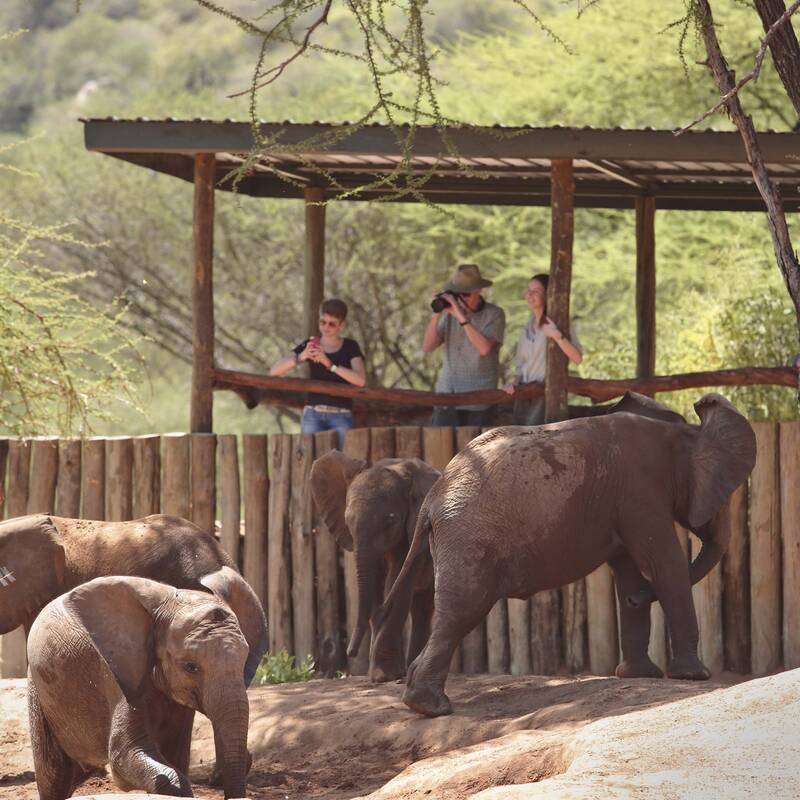
Reteti Elephant Orphanage visit
One-and-a-half hours, plus transfers
Visit the community-run Reteti Elephant Sanctuary in Samburu, for an intimate experience meeting the orphaned baby elephants who have been rescued from the surrounding regions. They are hand-reared by Samburu keepers, until they are ready to be released back into the wild.
More about Reteti Elephant OrphansOther lodges in Samburu National Reserve
Alternative places to stay in this same area.
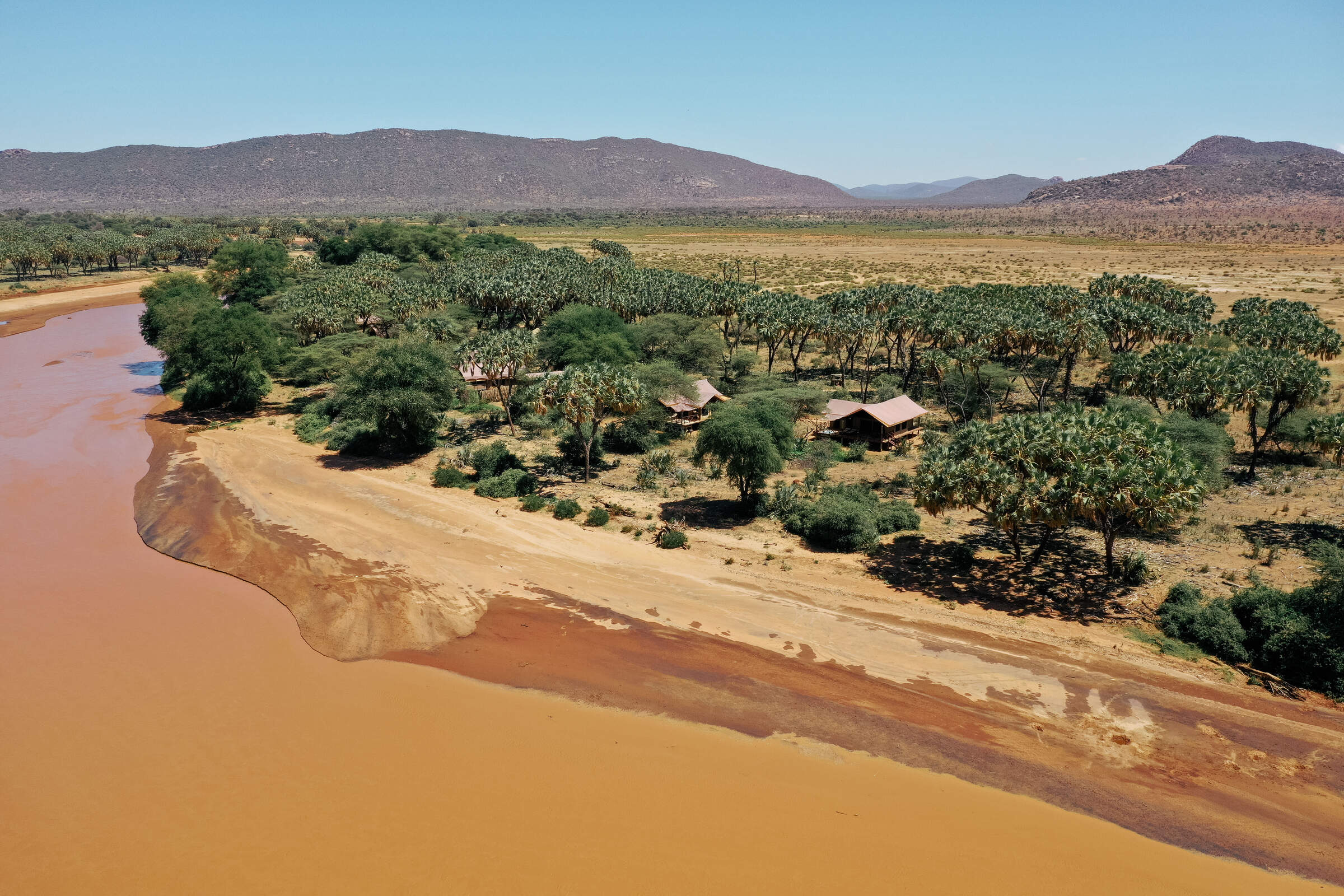
Elephant Bedroom
Elephant Bedroom is a smart tented camp in the heart of the Samburu National Reserve, offering a good degree of comfort without divorcing you from the beautiful natural environment.
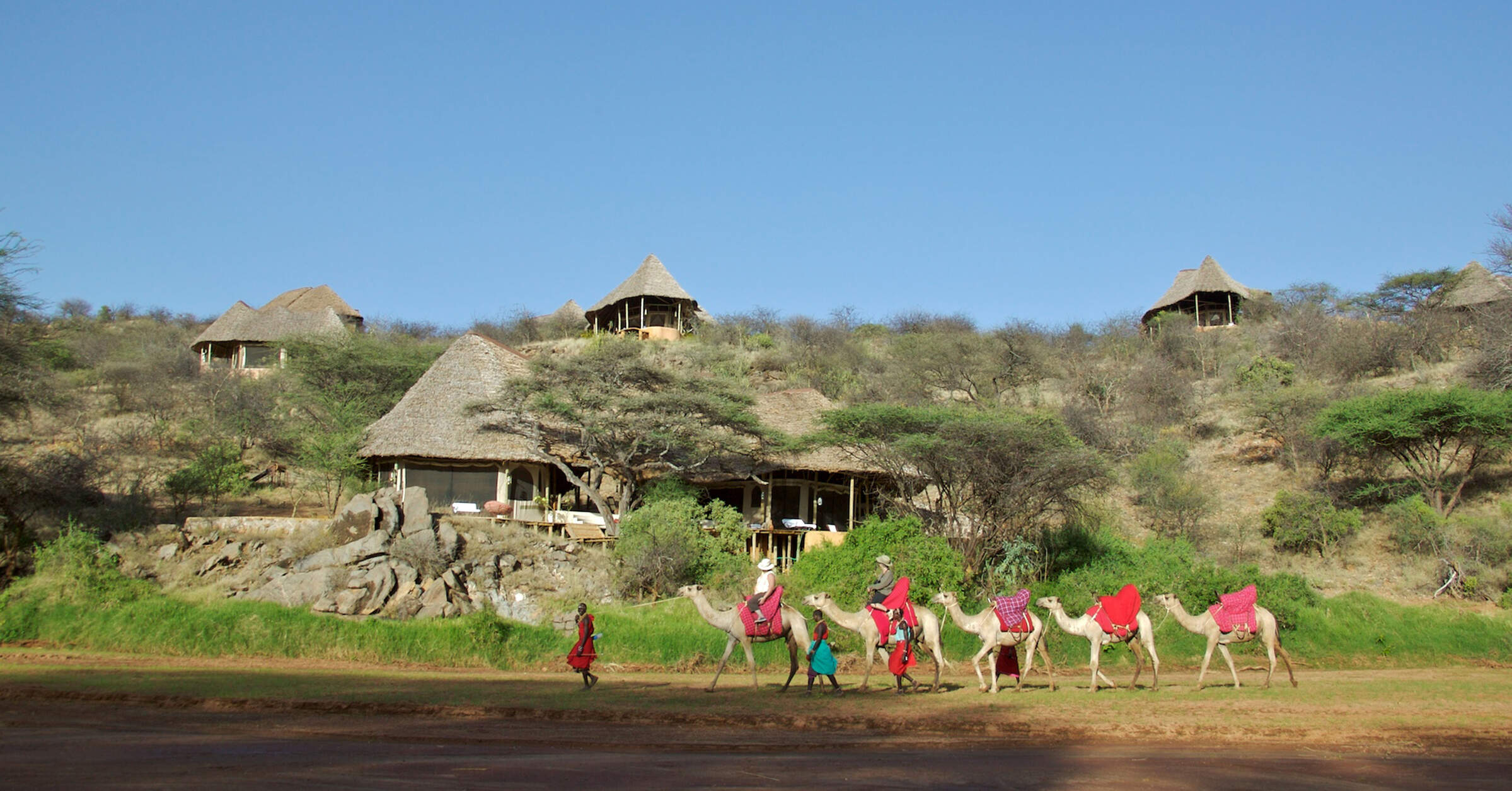
Sasaab
Stylish and luxurious Sasaab has nine rooms with stunning views across the Ewaso Nyiro River to the plains beyond.
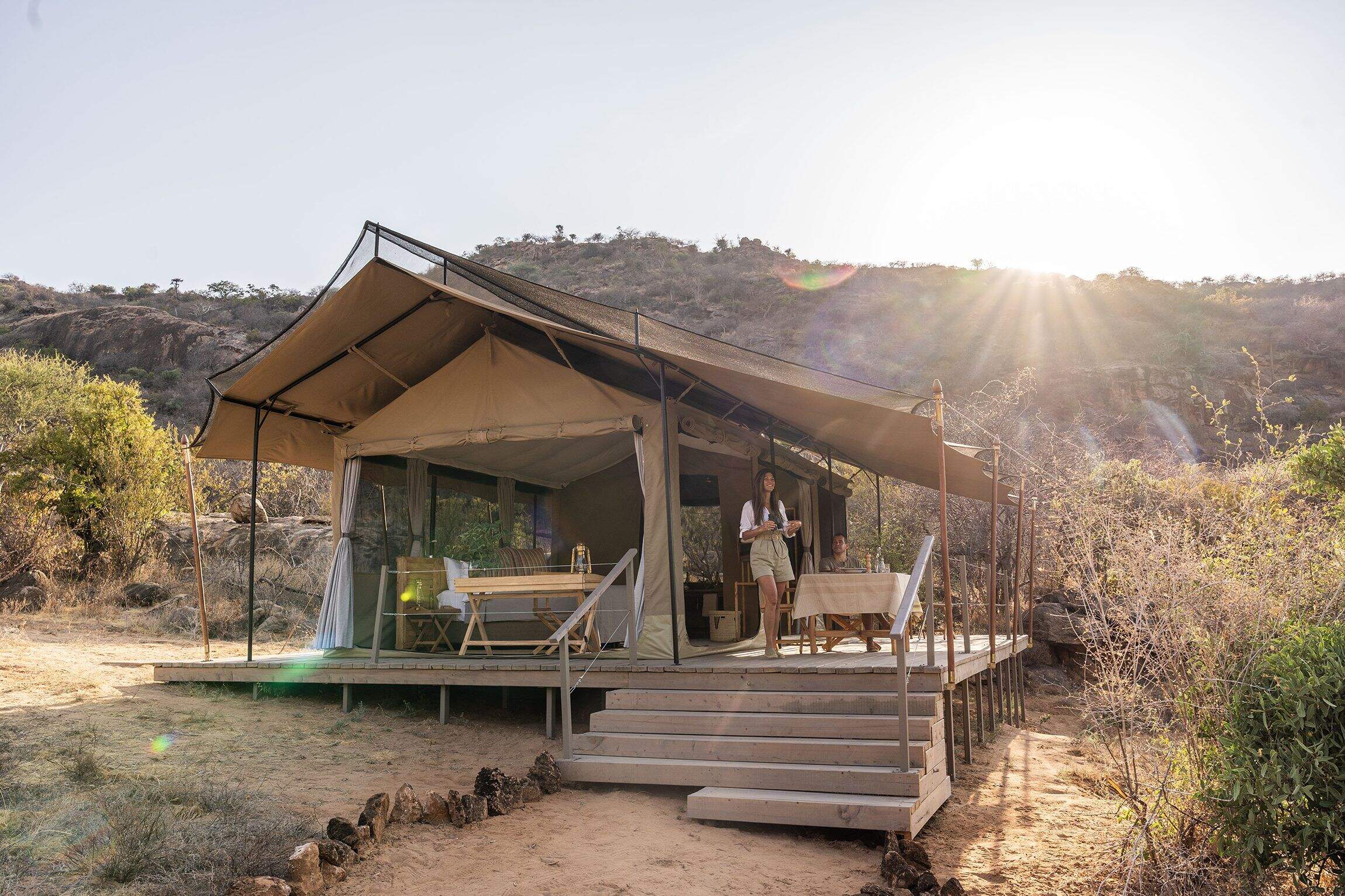
Basecamp Samburu
Basecamp Samburu is a smart tented camp offering an intimate safari within Samburu’s Kalama Conservancy and the surrounding reserve.
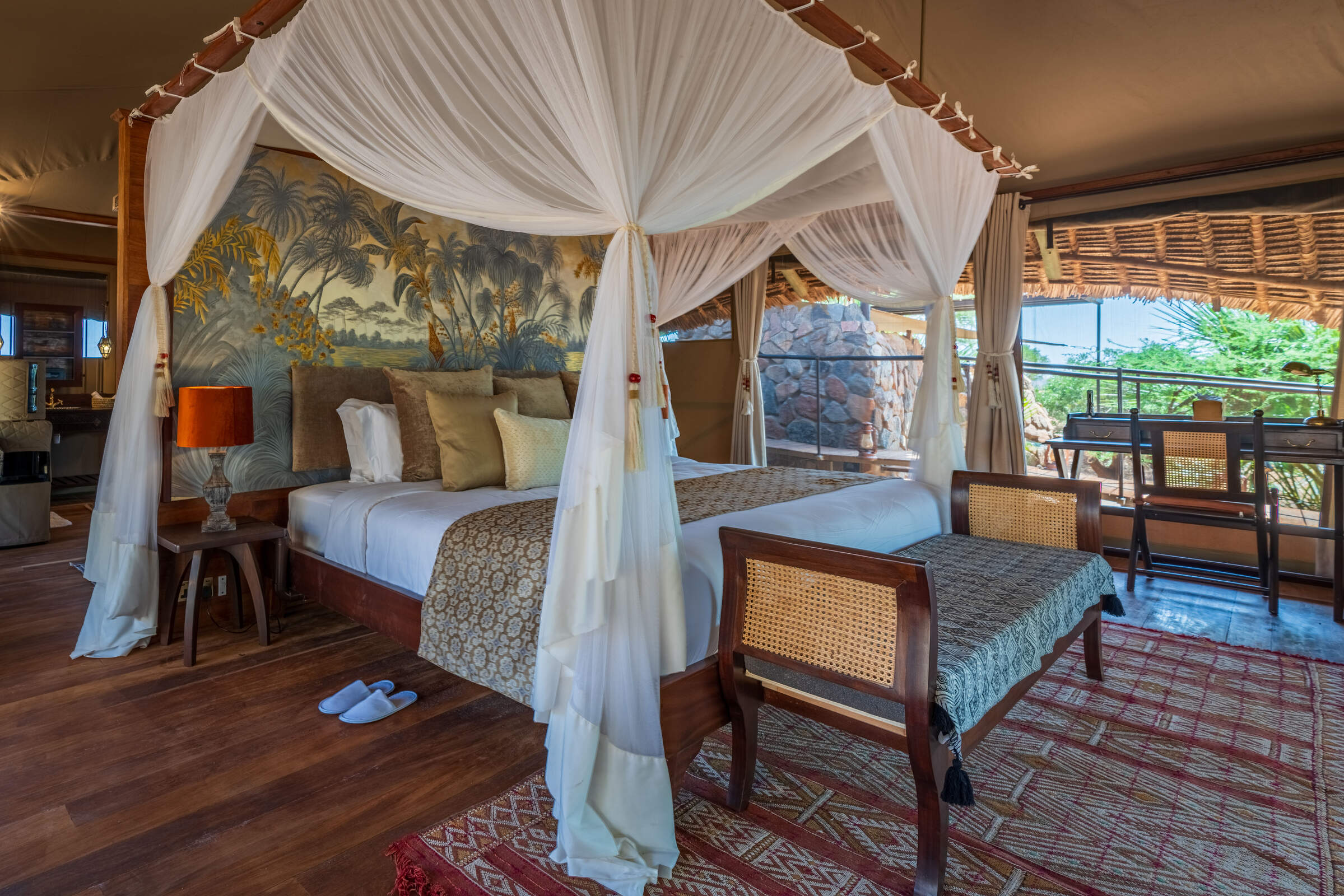
Larsens Tented Camp
Larsen’s Tented Camp is a relaxed and welcoming camp, with 20 sturdy tented rooms, a good pool and a very engaging team of staff.
When to go to Samburu National Reserve
Our month by month guide: What it's like to visit Saruni Samburu in Samburu National Reserve
Jan
Feb
Mar
Apr
May
Jun
Jul
Aug
Sep
Oct
Nov
Dec
Kenya in January
Clear, hot days and warm nights make this high season a popular time for safaris and it’s also good for diving and snorkelling as water clarity is excellent and gets better as the dry season progresses. Most lodges and tented camps treat January after the New Year week is over, as mid-season, making it a good compromise in terms of value for money with reasonably reliable, dry weather and some greenery left in the landscape.
Expert Africa bases its description of climate and weather in January, like the other months of the year, on the climate records of roughly the last 100 years, and it's fair to say that the weather and seasons since the beginning of this century have been highly irregular and unpredictable.
- On average, January is the second driest month of the year
- Elephants dig waterholes in the dry riverbed in the Samburu reserve.
- Wildebeest and many antelope have their calving season, to February.
- Migrant birds are seen in huge numbers, especially in the Rift Valley.
- Sea water clarity around the coral reefs generally good.
Our view
Fantastic: the very best time to visit
Weather in January
Kenya in February
With the short dry season well established, the grass grazed down and wildlife gathering close to water points, this is still a good time for a safari. Good water clarity in the Indian Ocean's coastal waters makes for excellent diving and snorkelling conditions.
Expert Africa bases its description of climate and weather in February, like the other months of the year, on the climate records of roughly the last 100 years, and it's fair to say that the weather and seasons since the beginning of this century have been highly irregular and unpredictable.
- On average, February is the driest month of the year.
- It’s sometimes possible to swim with whale sharks at Diani Beach.
- Migrant birds are still seen everywhere, especially near water.
- This is usually peak calving season for wildebeest and many antelopes.
- This month is often the hottest of the year, especially on the coast.
Our view
A very good time to visit
Weather in February
Kenya in March
Hot, increasingly humid weather – with good diving and snorkelling conditions at the start of the month – gives way to rains and lower accommodation costs. Expert Africa bases its description of climate and weather in March, like the other months of the year, on the climate records of roughly the last 100 years, and predicting the seasons since the beginning of this century has been difficult.
March is the month when – traditionally – intensely hot conditions build up until a cloudburst finally happens at the end of the month or in early April, to relieve the humidity. As ever, regional variations across the country can greatly impact on visitors' experiences.
- Sea-water clarity is best for diving before the long rains start.
- Visitor numbers are low, though the Easter holidays can be busier.
- Night skies can be scintillatingly clear in early March.
- Cropped down savannah grasses can make it easier to see the wildlife.
- Temperartures climb high, especially at lower elevations.
Our view
A good time to visit, with pros & cons
Weather in March
Kenya in April
April sees the full onset of the southeast monsoon wind or kusi, which heralds the long rains. Temperatures drop soon after the rains are established and you’ll often have facilities largely to yourself in this more affordable low season, sometimes known as the "green season". The bush quickly springs to life, with greenery sprouting almost before your eyes. While you're likely to get a fair number of heavy showers, the breaks in the rain can yield sparklingly clear conditions.
With the dust settled and bright sun piercing the clouds, conditions can be sublime for photography, especially first thing in the morning or in the late afternoon with another storm brewing. You may be lucky, or you may find conditions very wet and muddy.
- A wet month, the coast often gets more than 300mm (12in) of rain.
- Sunny spells can provide great light for photography.
- Buffalo and zebra calving season often happens in this month.
- Baby crocodiles hatch, for example on Central Island in Lake Turkana.
- Palearctic migrant birds gather to fly north to breeding grounds.
Our view
A time to avoid if possible
Weather in April
Kenya in May
While game viewing can be trickier as vegetation runs riot, between the cloudbursts the colours and light are great for photography at this time of year. Expert Africa bases its description of climate and weather in May, like the other months of the year, on the climate records of roughly the last 100 years, and while it's reasonable to expect heavy rains in many parts during this month, especially on the coast, the rains don't always come evenly or in some areas come at all.
In an El Niño year, the so-called long rains that normally are established across much of the country by May can be meagre, to the despair of farmers. On the other hand in a La Niña year, the long rains can bring floods. On the coast, the monsoon winds make the climate much more predictable, with heavy rains common throughout this month.
- Frogs breed in the ponds in the Arabuko Sokoke Forest near Watamu.
- Wildebeest, impala and other grazers are in rut (the breeding season).
- Kilimanjaro looks its best as heavy rain falls as snow on the summit.
- There's a sharp peek of rainfall on the coast with many rainy days.
- Accommodation prices are uniformly low, while some camps close.
Our view
A time to avoid if possible
Weather in May
Kenya in June
The rains give way to cloudy, cooler weather, often making for comfortable conditions by the end of the month, especially in the highlands. Starting from mid-June or the beginning of July and running until the end of October, this is the high season, and accordingly has higher accommodation rates and – at least until early September – higher numbers of visitors.
While the early part of June can often be rainy on the coast, it can be a great time to go on safari, with fresh greenery, many young animals and good photographic conditions with clear air.
- The Taru Desert, inland from the coast, is carpeted with flowers.
- The Lake Turkana Cultural Festival is held in Loiyangalani.
- Madaraka Day (commemorating self rule) is 1 June.
- The annual Lewa marathon runs a course through the wildlife.
- The Diani Rules "sports" event rips up the rulebook at Diani Beach.
Our view
A good time to visit, with pros & cons
Weather in June
Kenya in July
Kenya’s “winter" season sets in (winter is a misnomer but locals feel the change), and the highlands can be rather grey. Skies are often cloudy and the days can be surprisingly cool, with an average daytime high in many highland safari areas of 15-20°C and night-time temperatures dropping below 10°C in Nairobi and the highlands. Lower parts of the country and the coast are usually warm and dry, typically reaching highs of around 25°C with lows in the high teens.
As this is the start of the high season, coinciding with the usual arrival of the wildebeest migration in the Maasai Mara, July is a busy month. Ask your Expert Africa specialist to advise on how to avoid the crowds, which is not that difficult to do.
- The wildebeest migration usually reaches the Maasai Mara in July.
- Simbi Lake (Kisumu) and Crater Lake (Naivasha) can attract flamingoes.
- Watersports start to pick up and some surfing is possible at Malindi.
- Afternoon thunderstorms are a common feature in the Maasai Mara.
- The sea can be choppy along the coast, making diving difficult.
Our view
A good time to visit, with pros & cons
Weather in July
Kenya in August
The Great Migration fills the plains of the Maasai Mara, and school’s out, so the park roads are full of tourists – ask your Expert Africa specialist for advice on crowd avoidance tactics. Choose a private conservancy rather than a public national park or national reserve for quieter conditions.
Like July, August is generally mild and relatively dry in the safari areas, but it can be very chilly in the highlands, even in the middle of the day, and hail occasionally falls above altitudes of around 2,400m (8,000ft). Nairobi can be disappointingly overcast, with low cloud.
- Apart from Christmas holidays, this is the busiest month of the year.
- Late August sees peak wildebeest drama at the Mara River crossings.
- Coastal winds are good for kite- and wind-surfing.
- Few mosquitoes are around at this generally dry time of year.
- The annual Camel Derby takes place in the Samburu capital, Maralal.
Our view
A good time to visit, with pros & cons
Weather in August
Kenya in September
The skies clearing of cloud signals the start of hot, dry weather with little chance of rain – and, after the first few days of the month, far fewer visitors – making the latter part of September a good time for a quieter safari. While early September is often good for dramatic migration crossings along the Mara River, you might consider deliberately postponing your trip until later in the month, when the migration can still be very impressive and visitor numbers fewer.
If tourist surges are somewhat predictable, however, the patterns of the wildebeest migration are more volatile, and like all of Expert Africa's climate and weather assessments, they are based on accumulated years of experience rather than guaranteed certainty.
- This is still high season, with prices to match.
- Many river crossings take place on the Mara river in both directions.
- Natural bush fires flush out insects and small animals for predators.
- The Rift Valley Music Festival takes place by Lake Naivasha.
- With school holidays over by early September, late-month is quieter.
Our view
Fantastic: the very best time to visit
Weather in September
Kenya in October
Still hot, mostly dry and not too busy, this is many people’s preferred month for a safari, and it’s also good for diving and snorkelling. The wildebeest and zebra herds of the great migration are often still to be seen, though in dwindling numbers. The swamps of Amboseli attract thirsty wildlife including large herds of elephants.
While we wouldn't expect much rain across most of the country this month, the climate has become so unpredictable that you can never say never, and the possibiity of the short rains – usually associated with November to mid-December, starting early, can't be discounted.
- This month sees the tail end of the great migration in the Mara.
- Palearctic migrant birds start to arrive, staying until March.
- Turtle nests hatch at Watamu, until November.
- Amboseli elephants focus on the swamps for their daily water.
- The Indian Ocean monsoon winds turn from southeast to northeast.
Our view
A very good time to visit
Weather in October
Kenya in November
The northeast monsoon wind or kaskazi heralds the start of the “short rains", usually some time in the second half of the month. From November to mid-December, this is the low season, and accordingly has lower accommodation rates and lower visitor numbers. Across most of the country you can expect warm, somewhat cloudy weather, with occasional heavy showers and localised flooding.
Expert Africa bases its description of the climate in November, like the other months of the year, on the records of roughly the last 100 years, and it's fair to say that the seasons since the beginning of this century have been highly irregular and unpredictable: some years the short rains don't come at all, or don't reach every part of the country. In an El Niño year, the November short rains can be very heavy, but in a La Niña year, they can fail completely.
- Swimming with dolphins in Lamu can be done from now until April.
- Birders gather at Ngulia in Tsavo West to ring Palearctic migrants.
- The Lamu Cultural Festival takes over the town and Lamu Creek.
- Agricultural shows often take place regional market towns.
- This is low season, so camps can be great value, with special offers.
Our view
A good time to visit, with pros & cons
Weather in November
Kenya in December
In a typical December, the rains usually finish by middle of the month, leaving the landscape looking its best, under clear blue skies, and heralding the start of the second peak tourist season from around 20 December to the first week of January. Our assessment of the likely weather in December, like the other months of the year, is based on climate records, and it's fair to say that the seasons since the beginning of this century have been highly irregular and unpredictable.
Christmas can sometimes be wet, but most years the rains have finished a week or two earlier, with the festive season ushering in the perfect combination of clear skies and sunshine by day and starry nights.
- Christmas and New Year are busy, with the lodges and camps full.
- Rates are highest after 24 Dec, with supplements on public holidays.
- Republic Day and Independence day are celebrated on 12 December.
- Good kite- and wind-surfing restarts, with strong northeasterly winds.
- Mango season begins, providing excitement for primates and elephants.
Our view
A good time to visit, with pros & cons
Weather in December

Looking for inspiration on where to travel next?
Visit our trip chooser to explore your options and find inspiration for your perfect African adventure
Inspire me